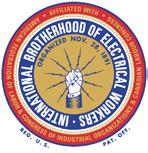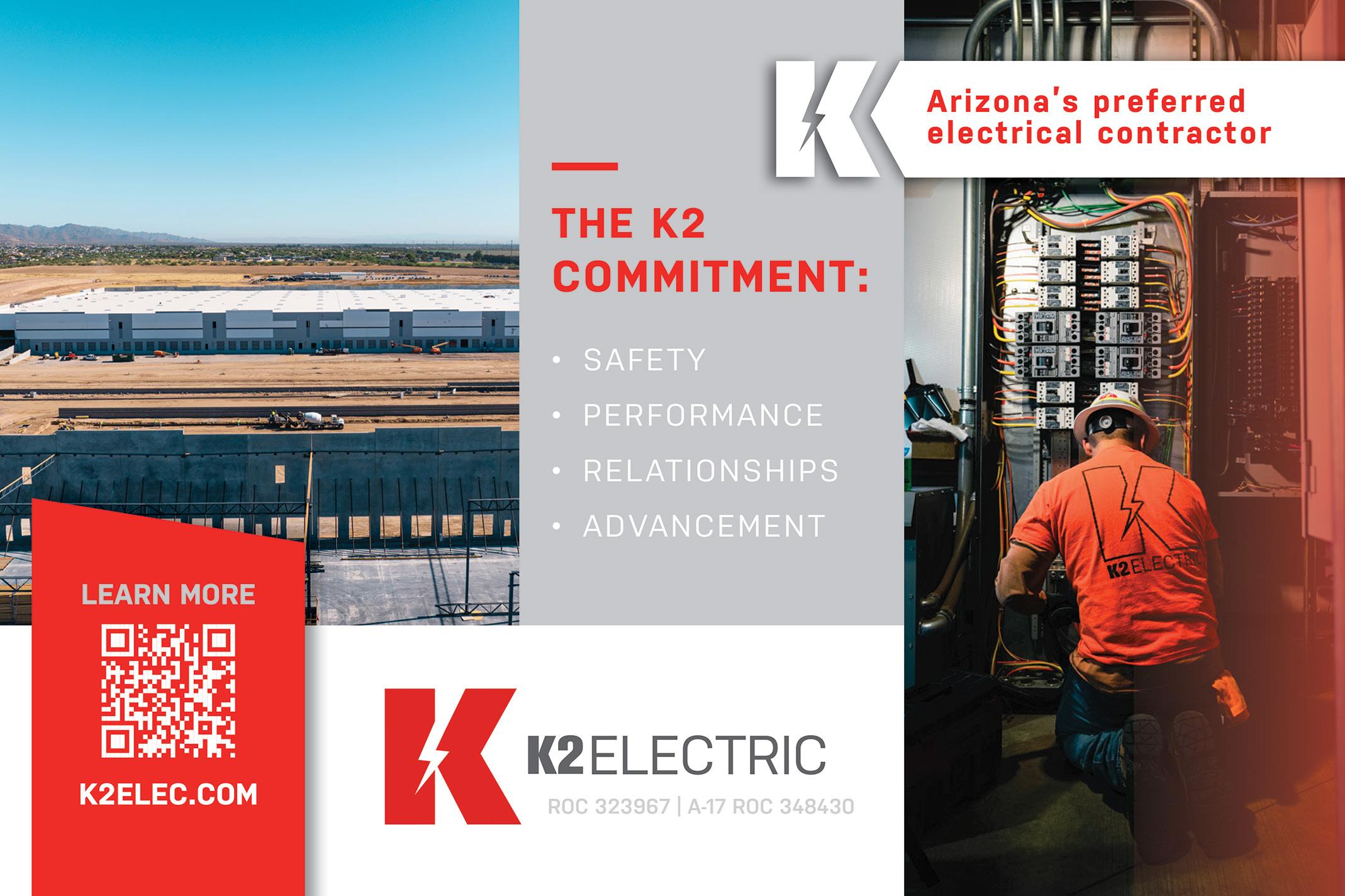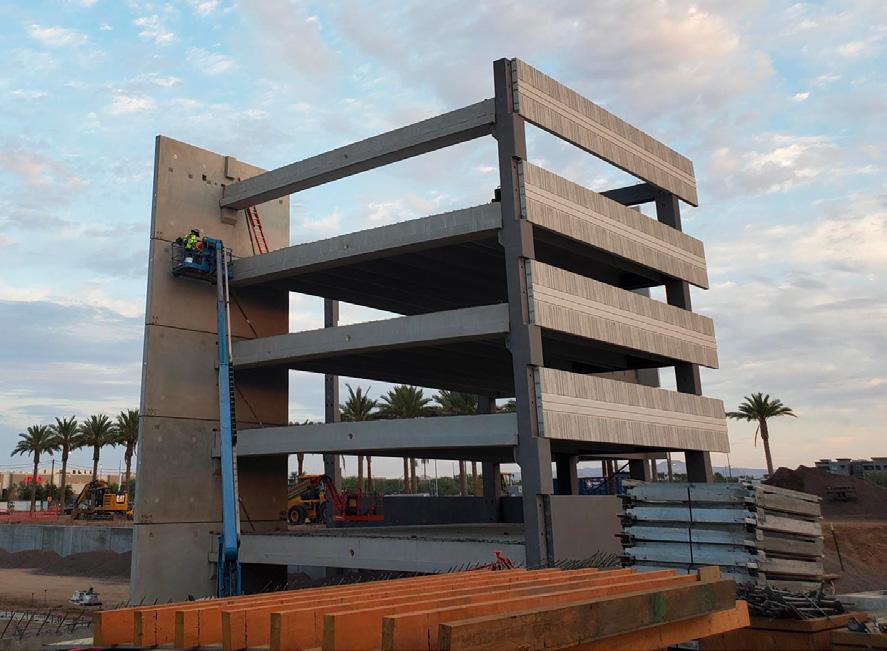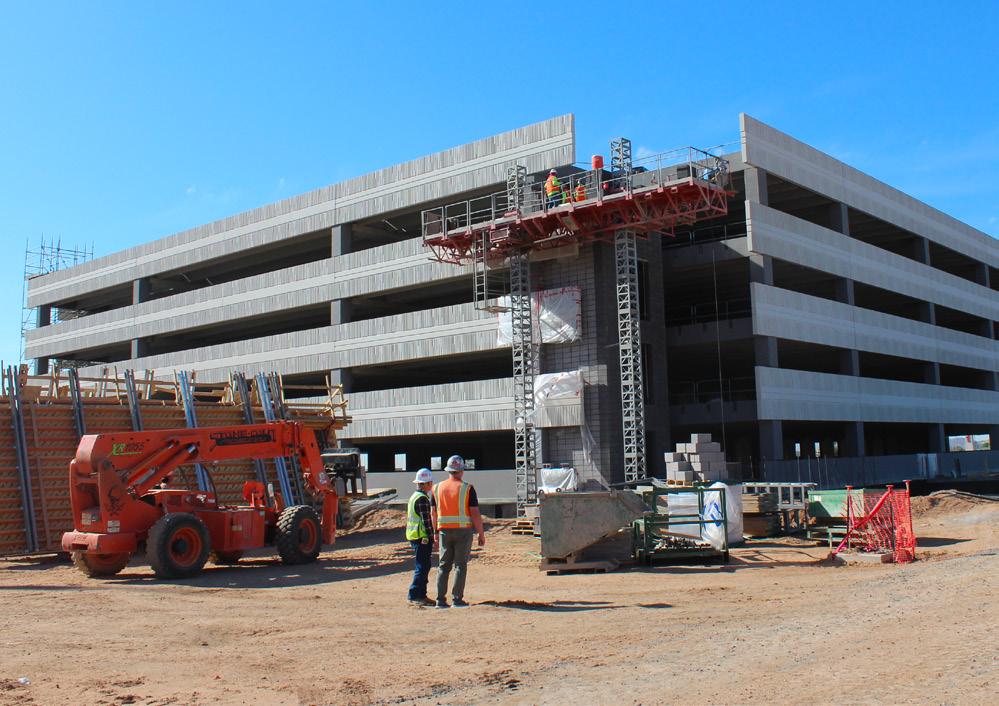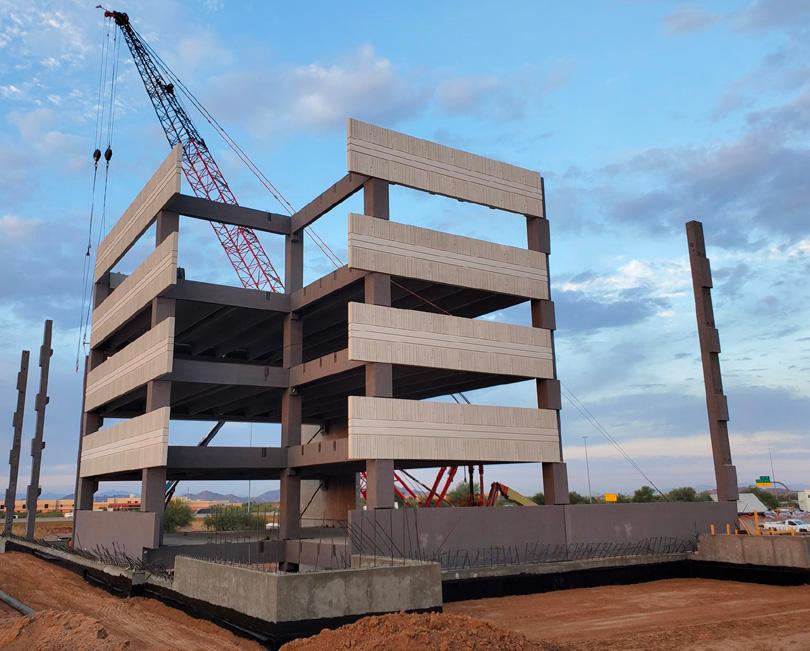

STRONGER TOGETHER
How the ABA builds connections and advocates on behalf of construction
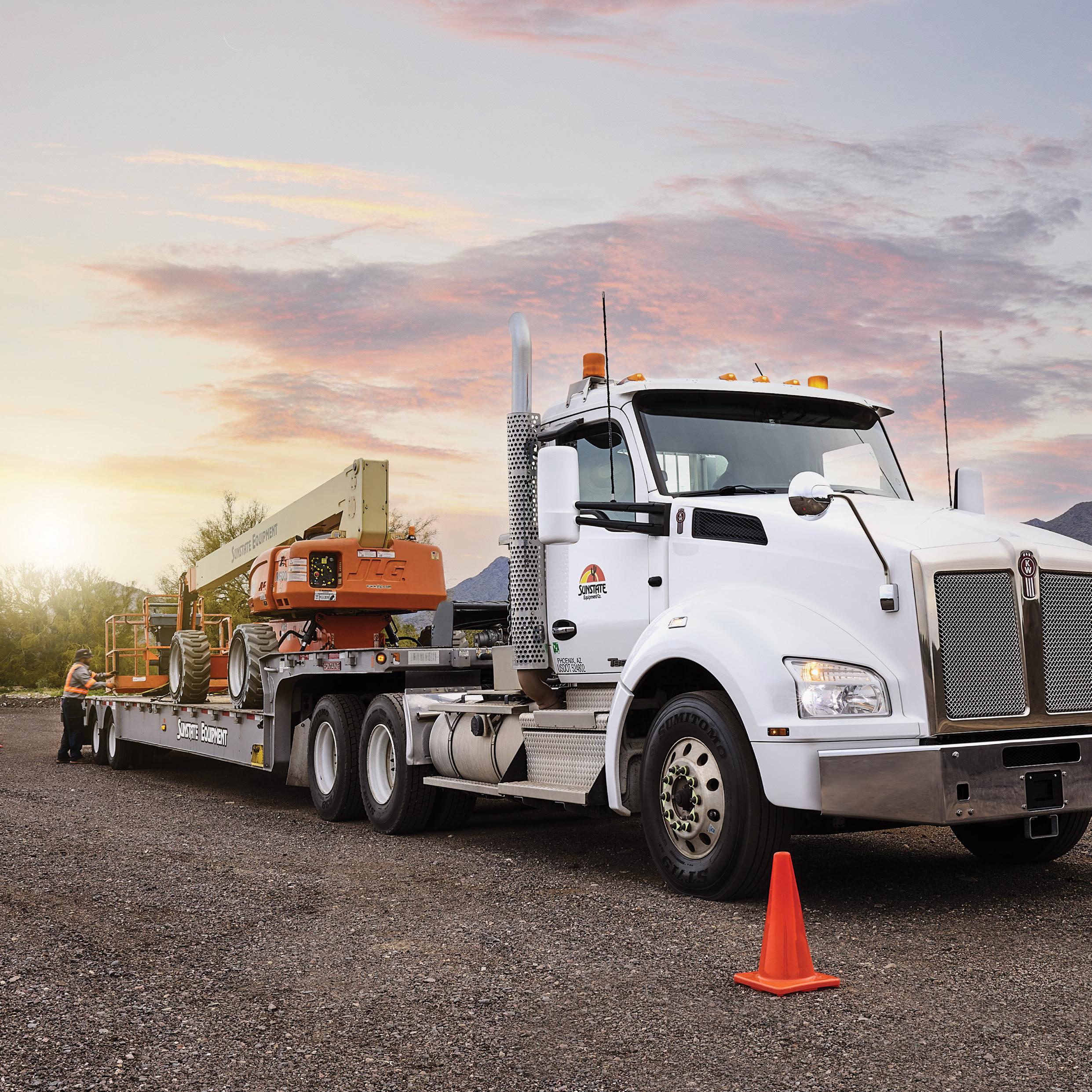
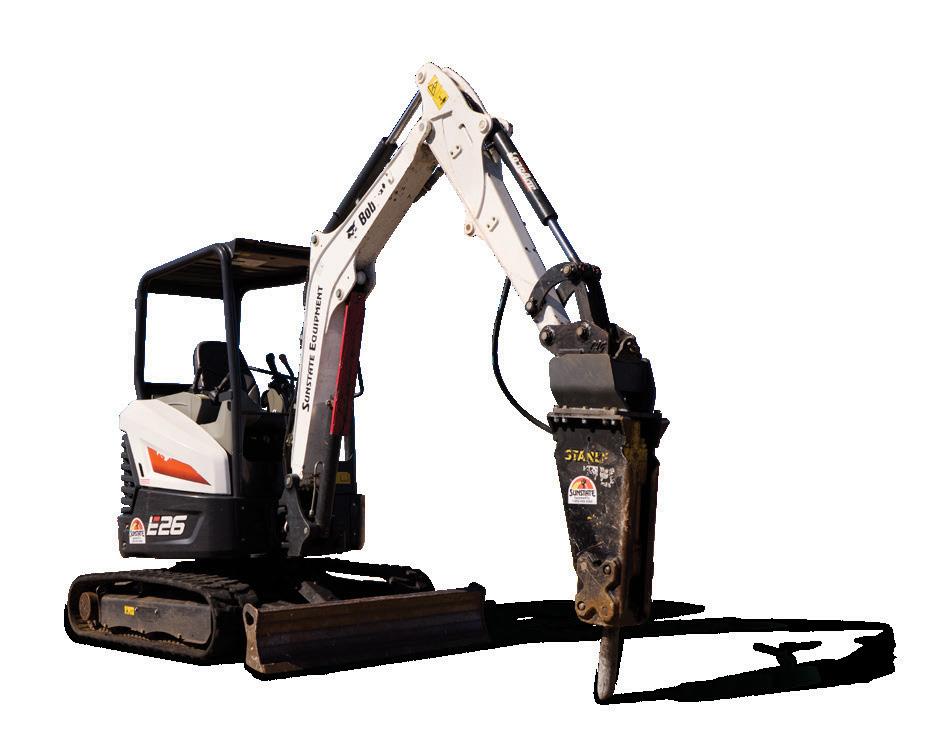

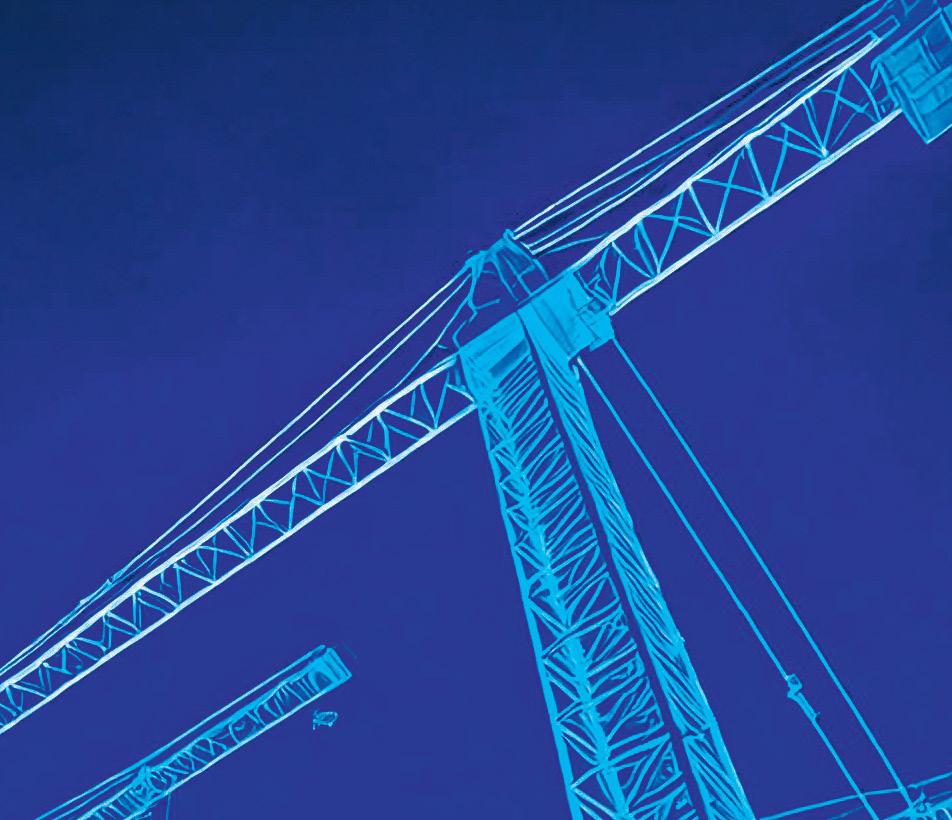



ARIZONA BUILDERS ALLIANCE
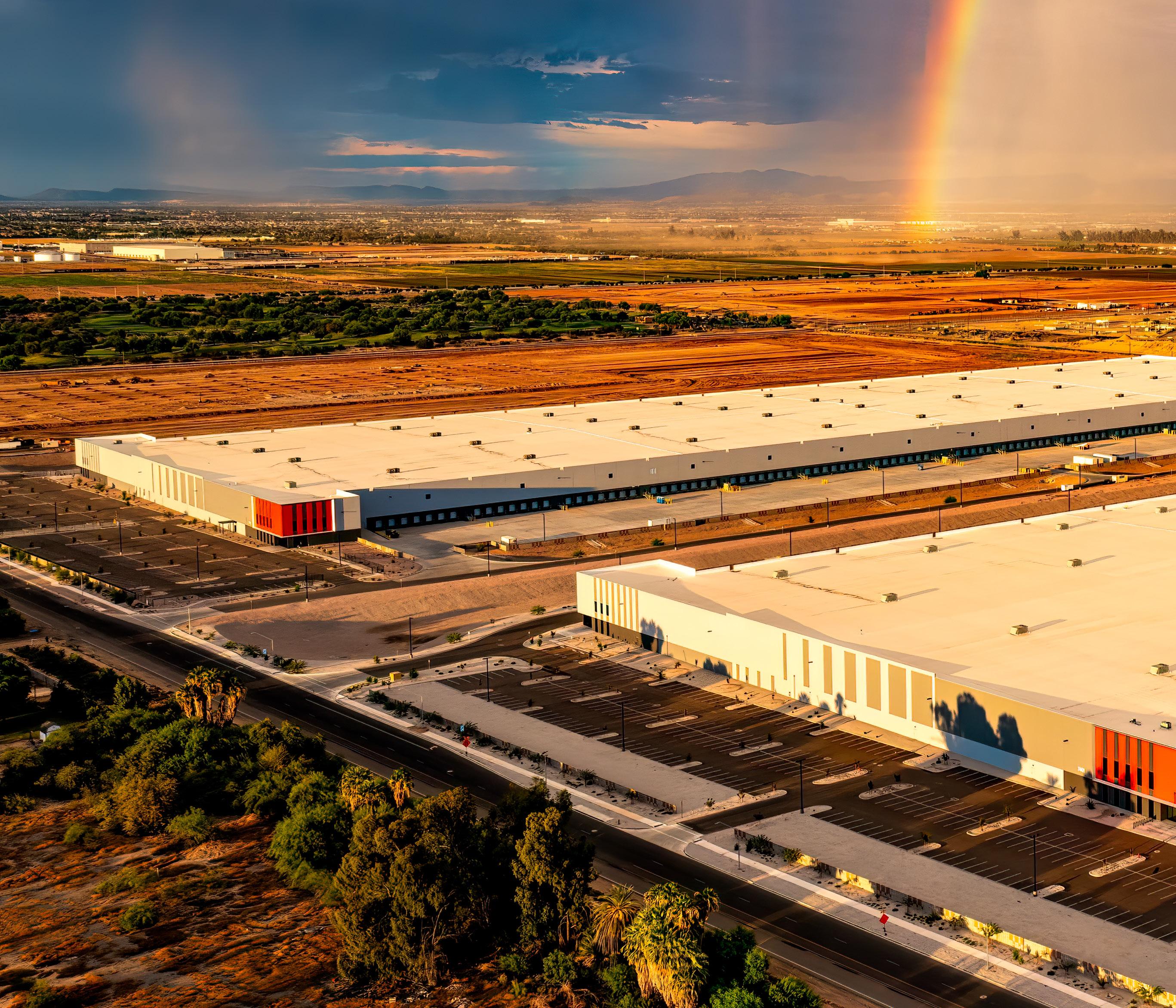
SURVEYING THE FIELD Construction leaders share market insights
By KYLE BACKER
Throughout the first half of the decade, Arizona has seen unprecedented growth, with hundreds of billions of dollars in new developments flowing into the state. TSMC Arizona’s $165 billion investment raised the state’s profile as a worthwhile place to do business, and new projects across multiple sectors continue to break ground.
AZRE magazine sat down with four members of the Arizona Builders Alliance (ABA) to learn about what’s happening in the state’s construction industry — the volume of available work, how market dynamics are shifting, the impacts of tariffs, why technology is shaping the future of building and more:
CHRIS KIRCH, president at Kitchell
DANIELLE PUENTE TORRES, president at DP Electric
MARK STOLLER, general manager at GrayWolf
NATHAN LENTZ, Arizona business unit leader at DPR Construction
The following has been edited for clarity and length.
LOGISTICS JUGGERNAUT: The Cubes at
is a 1,200,140-squarefoot state-of-the-art distribution
industrial market. This project — A 2025 RED Awards finalist — is
meet the needs of the modern logistics sector, with features such as 36-foot clear heights, 236 dock doors, 540 trailer spaces and 1,500 parking spots.
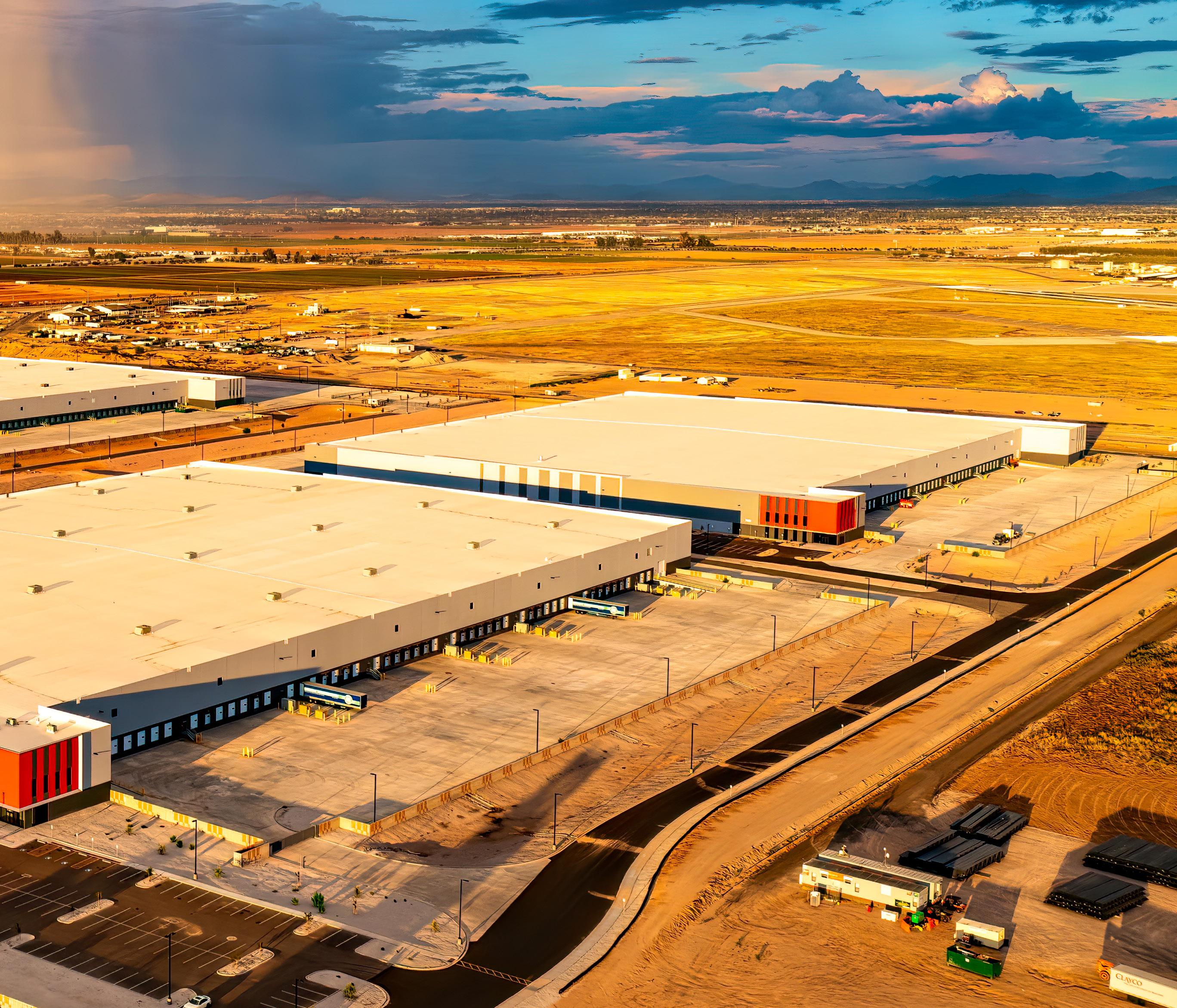
AZRE: The construction industry has been busy over the last five years. Has the amount of available work changed at all?
Danielle Puente Torres: From 2022 to 2024, we saw huge spikes in growth, but we’re anticipating revenue in 2025 to be flat. We do see a lot of opportunities coming in 2026 and 2027, even though the first half of this year has been slightly slower.
Project sizes are still very large, with lots of hyperscale data centers being built and the semiconductor space continuing to grow, so we expect to get more traction going into the next year.
AZRE: Nathan, are you still seeing big developments come to Arizona?
Nathan Lentz: I couldn’t agree more with Danielle. The average size of projects DPR works on now has doubled from what it used to be. We’re fortunate to have these mega jobs in our backyard, but that may skew the numbers of what is true growth versus one-off bursts. Our costs have also gone up, which I’m sure our trade partners are feeling too.
As far as volume, we have a steady book of business through the end of 2027.
AZRE: Mark, what’re your thoughts on the state of construction today?
Mark Stoller: Over the last couple of years, there has been a shift in the market. The tilt warehouse space was so busy it was putting a huge constraint on materials and disrupting other sectors. That has changed some with interest rates being what they are, but overall, we’re still seeing growth.
AZRE: Anything you like to add, Chris?
Chris Kirch: Like the others have said, there are still plenty of large-scale jobs going on, but we’re also seeing a change
Glendale – Building B
facility strategically located in the heart of the Phoenix
designed to
(Photo courtesy of CRG.)
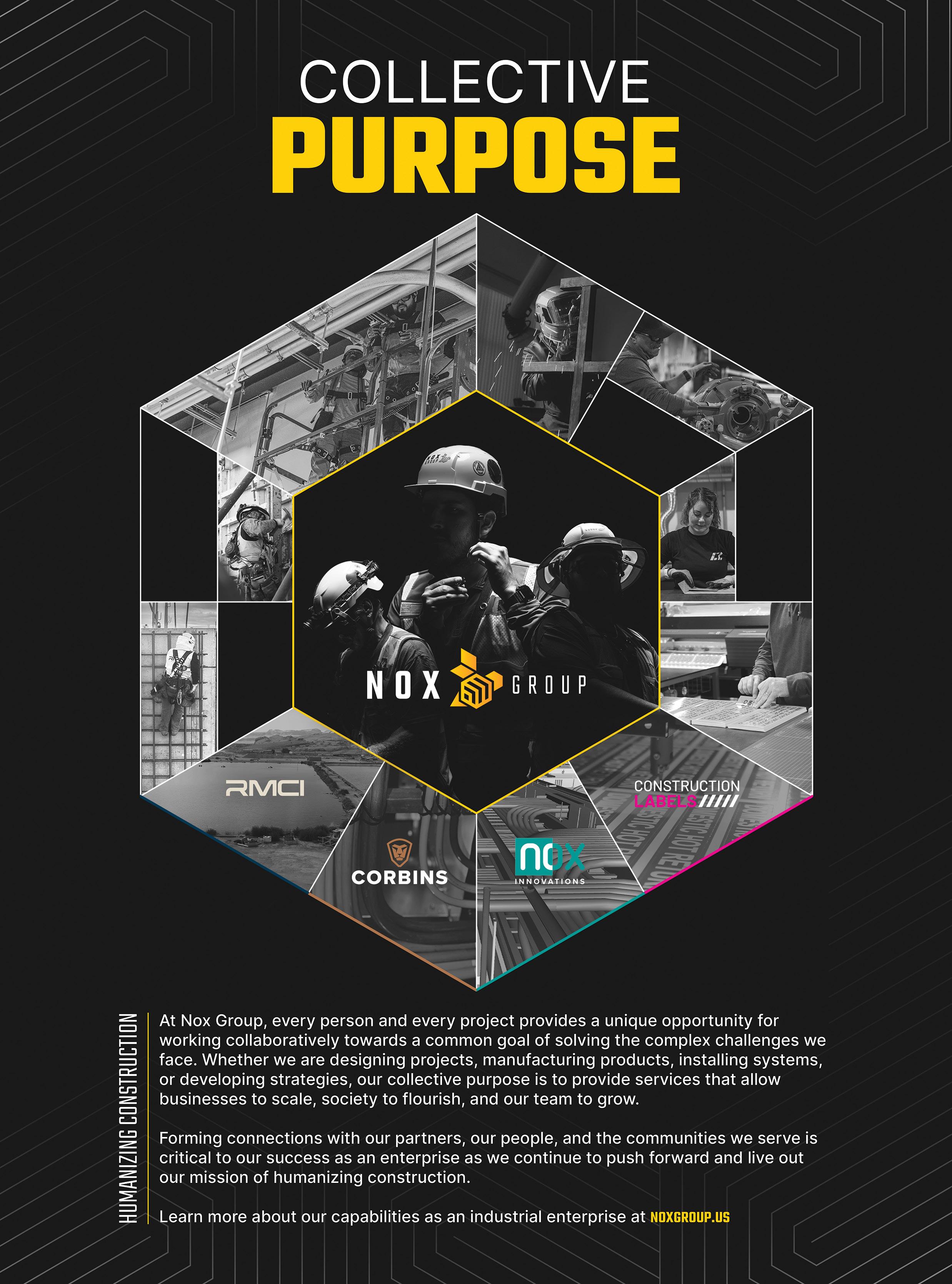
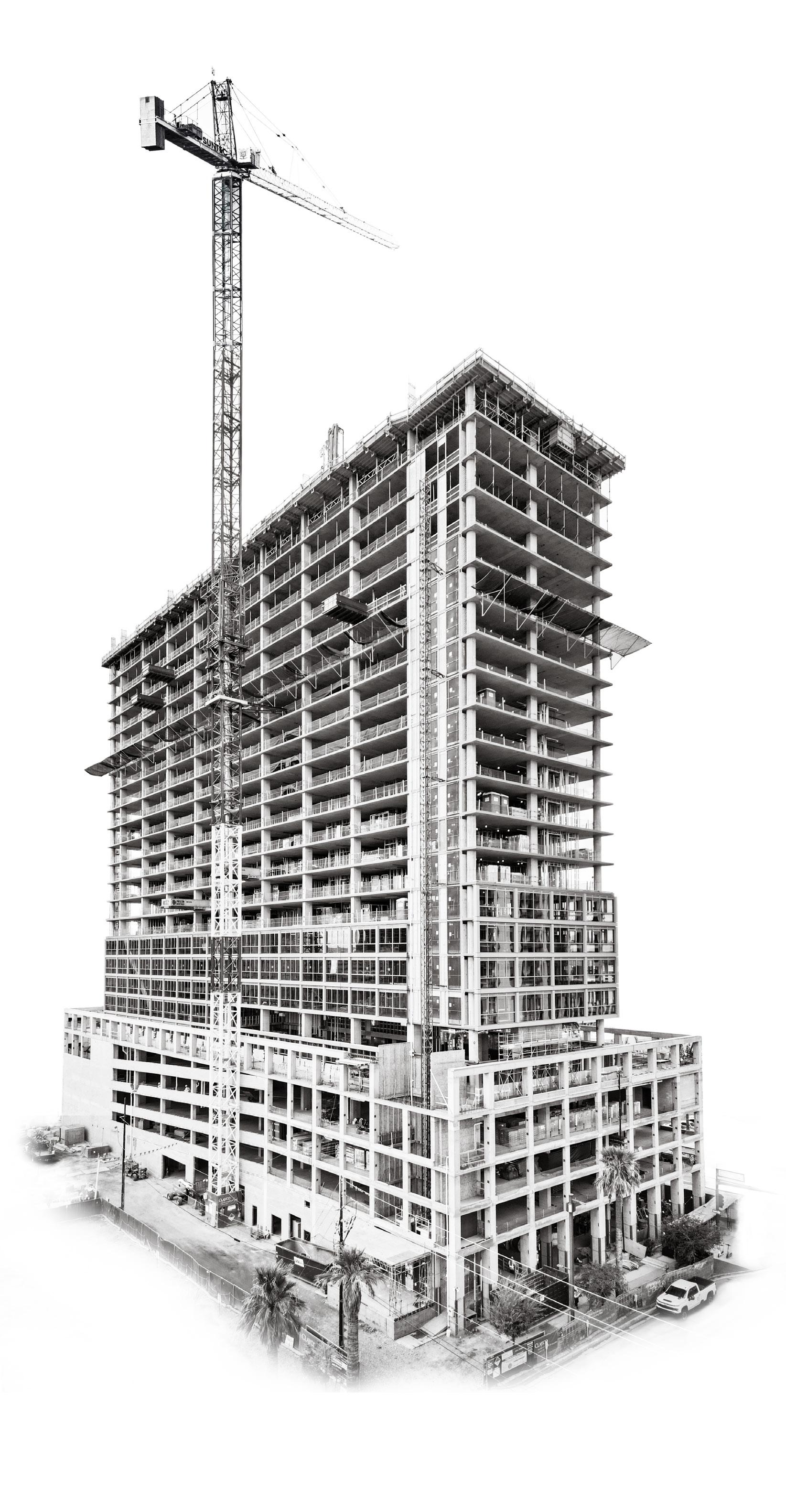

THE FOUNDATION OF DEVELOPMENT
Through the hard work of our skilled craftsmen, a dedication to safety, and our commitment to clients and community, SUNTEC CONCRETE has become the region’s largest commercial concrete company and the foundation of development across the West.
ARIZONA BUILDERS ALLIANCE
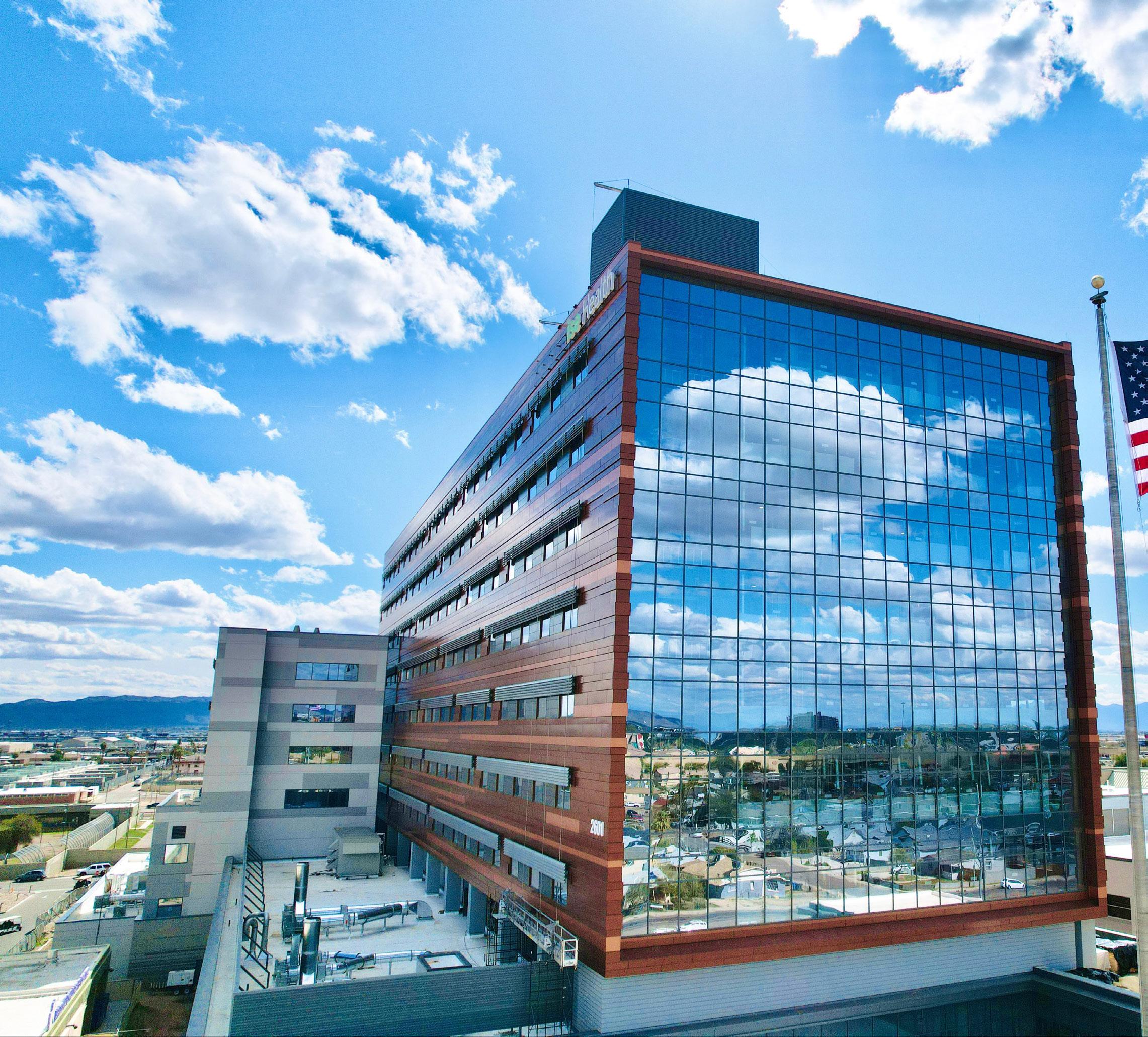
COMMUNITY CARE: A 2025 RED Awards winner, the Valleywise Health Medical Center adds a 673,000-square-foot, 10-story hospital tower and an additional six-story support building to Greater Phoenix’s healthcare infrastructure. This transformative facility replaces a 50-year-old legacy hospital with a state-of-the-art medical hub designed to meet the growing needs of the region. (Photo courtesy of Kitchell.)
in what is getting built. There aren’t as many big healthcare projects out there compared to the last several years — now it’s mostly renovations and expansions. On the other hand, a lot of construction is happening in Native American communities.
As these huge semiconductor and data center developments finish up, more will need to be built to support that growth. So, I think Arizona has a strong, diverse market. If one sector is down, another is up, which carries the industry forward and keeps us all busy.
AZRE: Danielle, you mentioned DP Electric’s workload has plateaued compared to the last few years. Is a slowdown concerning when you know more jobs are coming in 2026?
DPT: We’re a growth-minded organization, so we’ll always strive for that. But having one flat year to catch our breath is not the worst thing. Right now, the focus is on training and improving our processes — which are hard to do when things are hectic. That will make us even more prepared to tackle the opportunities ahead.
NL: Just to add to Danielle’s point — nobody wants the growth chart to look like an EKG monitor. There’s always the push and pull of being strategic, following the right leads and ensuring everything aligns with business needs.
As a self-performing general contractor, we have a large craft workforce. We don’t want these up-and-down spikes of job activity, because that causes releases. Danielle is right — all our companies are focused on growing, but we want to be strategic and not just let the market pull us.

AZRE: When it comes to challenges facing the construction industry, the most talked about one right now is tariffs. Have they had any effect on business, Mark?
MS: It has created uncertainty. Some of our material suppliers were expecting the worst-case scenario, and we saw prices spike at the beginning of the year. Articles always get written when costs go up, but there aren’t as many when they go down — and we have seen some softening. That still causes uncertainty though, which leads to more time spent on bidding before projects
move forward. We always try to keep our clients informed about strategies or workarounds to avoid longer schedules and added costs by bringing other solutions to the table.
AZRE: Danielle, have tariffs caused any disruptions in your work?
DPT: As far as actual cost impact, we haven’t seen much because it’s still all speculation. Clients are always asking us this question, but it’s hard to quantify right now. But the ambiguity of the situation has been a challenge.
AZRE: Have the tariffs, or the instability they cause, been a setback for DPR?
NL: There’s a lot of guessing going on out there about what this could grow into. Will we need to change our procurement process? How will it affect the end product? With all the unknowns, we’re consuming as much information as possible so we can respond responsibly to our clients and trade partners. We’ve built up tools and have subject matter experts to help quiet the noise and not overreact.
AZRE: Anything you’d like to add regarding tariffs, Chris?
CK: The others covered it well, but I want to mention that our industry learned a great deal navigating through the pandemic. To Nathan’s point, it’s all about transparency with our clients, trade partners and internally. That communication helps us all go in the
same direction. There’s uncertainty, but we have to move forward with projects and be open minded on how to approach problems as they come up.
MS: I’d like to add that even though tariffs are the hot topic, there are other problems that need to be solved to keep Arizona growing. Water issues will affect how much we can continue to expand, especially in the Valley.
There are other environmental concerns too. Maricopa County just avoided a potential hurdle regarding air quality, but it’s not over — just delayed.
Power is also critical. Data centers have significant energy requirements. How long until that starts affecting the average consumer?
NL: What’s great about this conversation is that it’s a great example of why the Arizona Builders Alliance and other organizations are so important. It’s about building partnerships — not just having our company names on a wall but taking action as an industry. None of the issues Mark brought up can be solved by a single person or company.
Chris, what you said really resonated with me. Keeping open lines of communication with the trades, manufacturers and our supply chain helps us band together to solve these issues. We all want to be profitable, but it can’t be at the expense of clients because of knee-jerk reactions.
CK: I agree. Talking about our struggles and celebrating our successes is how we become better as an industry.
ARIZONA BUILDERS ALLIANCE
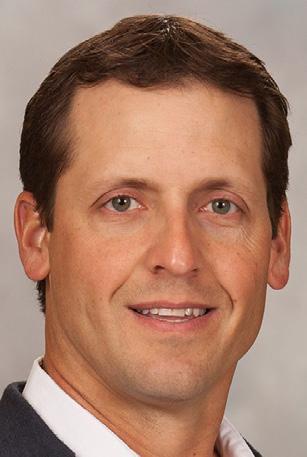
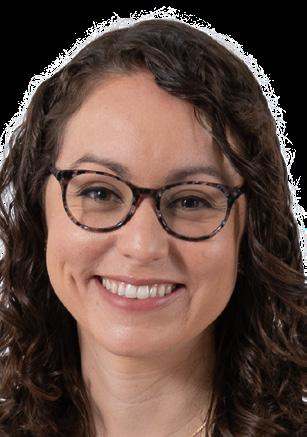
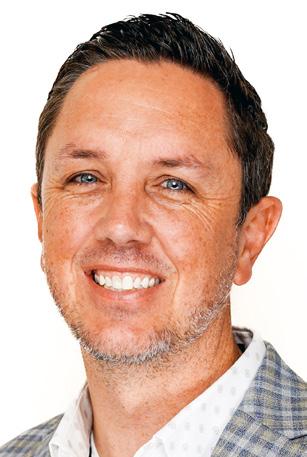

“... [W]e have a favorable building environment. The challenge will be to maintain those conditions ...
”And I think there’s more transparency now than ever. We’re all facing the same issues, so we might as well try to solve them together.
AZRE: Well said everyone. Is there anything else you all would like to leave readers with?
DPT: I think the Valley still hasn’t reached the level of some of the other big cities. At DP Electric, our goal is to diversify regionally, which is why we branched out into Texas last year. Having a bigger footprint will help us as the market shifts, because no one really knows what will happen in Arizona in the long term. But we're just starting out on that journey.
I’d also like to add that I’m hopeful about the next generation. When it comes to technology, they will help us navigate those changes. The emotional intelligence and leadership capacity I see in young people makes
me confident that we can handle the challenges that arise in the future.
MS: The incredible growth happening in the Arizona market can be traced back to projects like TSMC and others that showed we have a favorable building environment. The challenge will be to maintain those conditions that allow companies to come here and develop projects that pencil out. They’ll need water, power and a workforce, and our industry should do what we can to help meet those needs.
NL: The tools of the trade are changing. Today, we’re armed with iPads and augmented reality to best serve our customers, because everyone wants the work done faster without sacrificing quality. We have to evolve as the market does, and that means educating the next generation.
But we also need to remember our obligation to the craft workers we have
now. There has been a positive shift in how our customers are trying to create a better experience for them. We don’t have robots out on a job site building these structures — human beings are making it happen.
CK: I’ll touch a bit more on technology. Last year, I was telling a young project engineer how 20 years ago, I posted RFIs by hand, explaining all the steps that went into that process. He never even considered of having to do it like that because this digital world we all live in is the only one he knows. So much has changed since I started in the industry — even just in the last five years.
With AI and all the new technology coming out, I think we need to be sure we’re using the right tools and not let ourselves get distracted by the novelty of it all. Having a plan in place will be important because it could go off the rails if we’re not careful.
Mark Stoller Danielle Puente Torres Chris Kirch Nathan Lentz

WHO IS STEELFAB?
SteelFab specializes in innovative industrial, structural, and miscellaneous projects; committed to providing outstanding customer service, quality, and safety.
We specialize in structural and miscellaneous steel and focus on the design, fabrication, and installation of various types of steel components that are integral to construction and manufacturing.
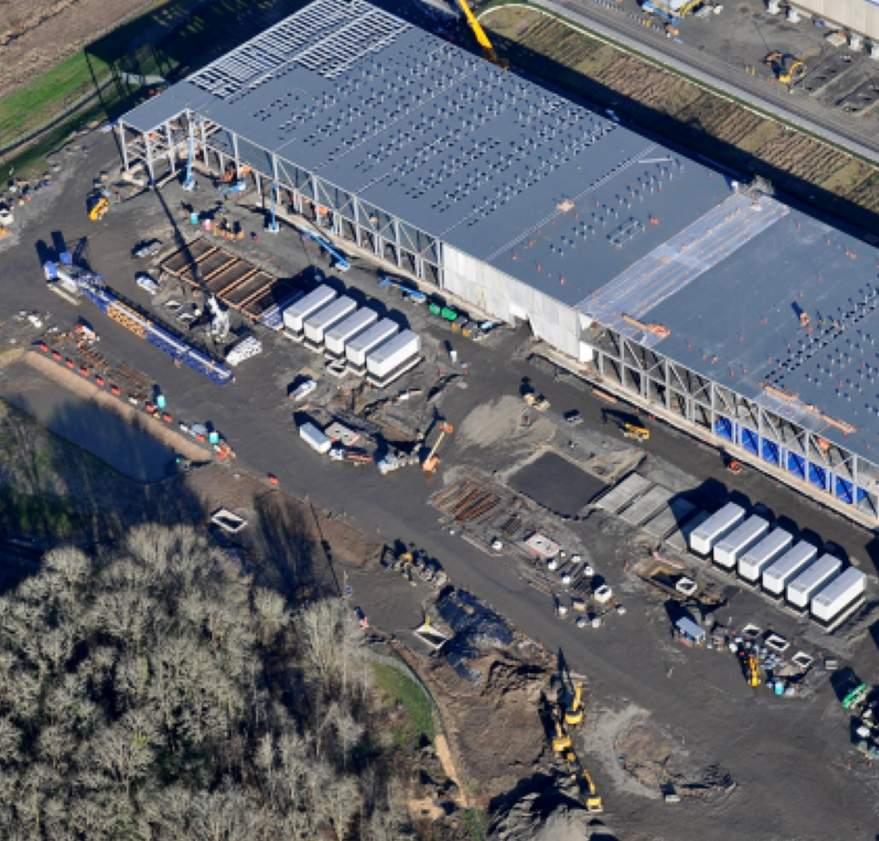
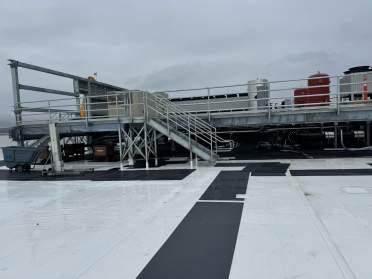
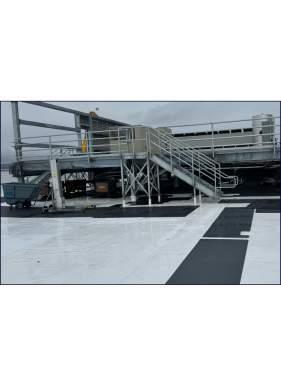
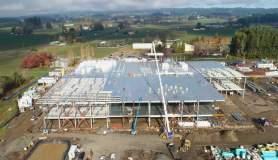
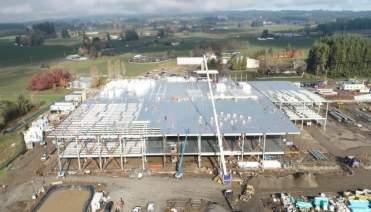
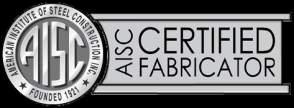
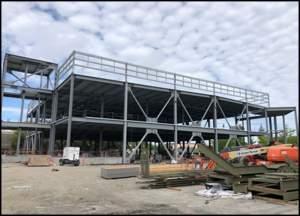
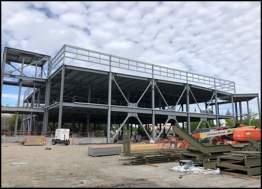
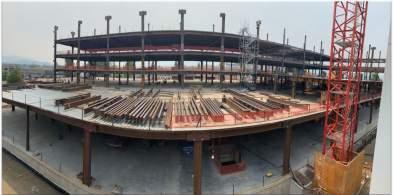
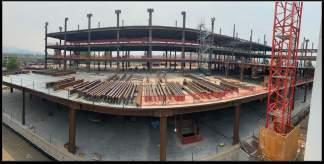
ARIZONA BUILDERS ALLIANCE

BUILDING VALUE
How the ABA connects members to create a stronger industry
By KYLE BACKER
Construction is a vast industry full of highly skilled individuals, each having their own specialty and focus. When these professionals work together, the resulting projects add value to the community, create new jobs and grow Arizona’s economy. Cultivating solidarity in a competitive market comes with challenges, but the Arizona Builders Alliance (ABA) has successfully created a space for over 380 commercial construction companies to collaborate, learn and promote the industry’s interests.
While those three elements are the core pillars of the organization, Kim Davids, president and CEO of the ABA,
explains that some of the benefits members enjoy can be difficult to quantify.
“As a former general contractor myself, the value of the ABA was always based on the intangibles,” she continues. “I can say we educate and advocate on behalf of the industry, but people underestimate the other factors that are harder to see.”
For example, Davids points out that members who attend the association’s courses not only learn more about a particular topic but also establish bonds with other professionals.
“The purpose of the ABA isn’t to find work or get that next project,” she says.
“It’s about broadening your horizons by networking with people who want to help each other grow. That translates to stronger companies and better leaders.”
Better together
While the ABA is focused on commercial construction, membership is open to any general contractor or subcontractor that does work within Arizona regardless of union status. Businesses that support the industry, such as insurance providers, suppliers or bankers, are also welcome to join. Derek Wright, president and CEO of Suntec Concrete, notes that being part of a statewide organization

allows members to tap into resources, relationships and insights that would be difficult to access otherwise.
“It broadens your perspective beyond your local market and connects you to what’s happening across Arizona,” he continues. “You’re part of the conversations that shape policies and priorities impacting our industry. And through networking, education and collective advocacy, your company is better positioned to adapt, grow and lead.”
Which bills become law have serious implications, especially those concerning permitting, zoning, workforce development and safety standards. By
not concentrating on a single region, the ABA can gather feedback from all corners of the state to better represent the industry’s stance on these issues.
Wright adds that the opportunity to speak with lawmakers is a boon to all who work in construction.
“Staying engaged in the legislative process allows us not only to avoid unintended consequences, but also to help shape policies that drive growth, support a strong workforce, and contribute to Arizona’s long-term economic success,” he continues.
Another benefit of the association's broad membership is having the chance to hear how other companies approach
problems across Arizona, according to Brad Llyod, vice president of Lloyd Construction.
“I’ve been doing this my whole life, and you’d think I’d know everything about construction by now — but I don’t,” he continues. “Every time I go to an ABA meeting, I learn how other companies are building things differently than we are — and sometimes they’re doing it better. Sure, we’re all competitors, but we have a relationship where we’re truthfully looking out for each other. It’s something I haven’t seen anywhere else.”
After Lloyd’s father — the founder of Lloyd Construction — passed away, the ABA created the Bill Lloyd Scholarship
(Image licensed from ©Adobe Stock)
ARIZONA BUILDERS ALLIANCE
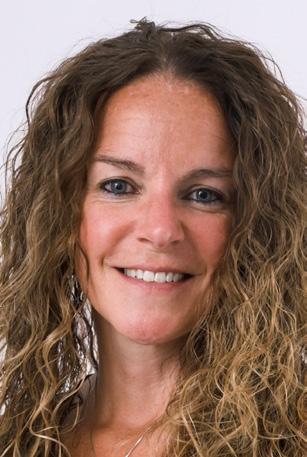
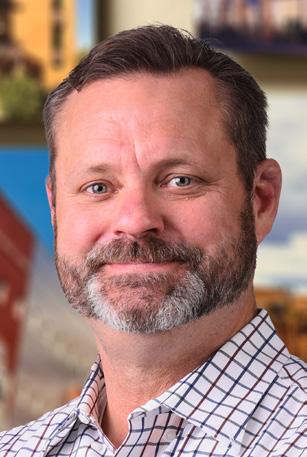
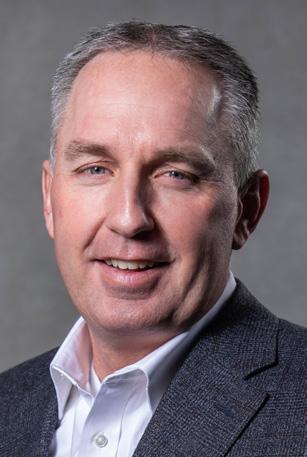
“When we work together, we strengthen the entire construction community, and that benefits everyone.
”
for engineering students attending his alma mater, the University of Arizona.
“Our competition did that out of respect for my father,” Lloyd says. “That’s the type of people who are in this group.”
While members may be bidding on the same jobs, Wright explains that many of the challenges companies ecounter — whether they be legislative, operational or otherwise — affect the entire industry.
“The ABA creates a space for us to come together, share ideas and raise the bar across the board,” he continues. “When we work together, we strengthen the entire construction community, and that benefits everyone.”
Paying it forward
While participation in the ABA provides avenues for members to speak out on policy issues and grow professionally, the association is also a way for folks to volunteer their time and talents. Wright says that when he first joined 13 years ago, he saw
his involvement mainly as a way to connect with others in the industry.
“[It] quickly became something much more meaningful,” he continues. “It’s a community of peers I respect, a source of continuous learning and a strong voice for our industry. Above all, it’s given me the opportunity to give back to an industry that has shaped both my career and Suntec’s success.”
Running a company is a high-stakes job that requires long hours and dedication. But even with a packed schedule, Wright lends his expertise to the ABA — even serving as board chair in 2023. In that position, he and others sought to strengthen apprenticeship programs and expand outreach efforts to the next generation of builders.
“Leadership in the industry is an investment in the future of construction, and long-term success of every company building in Arizona. The challenges we face, from labor shortages to workforce development and infrastructure, require a collective effort,” he continues. “Taking on a leadership role with the ABA is one
way I can contribute beyond Suntec to help ensure our industry stays strong, competitive and positioned for future growth.”
The ABA also organizes service projects so members can help those in need. Lloyd has volunteered for multiple initiatives, noting that some have reached upwards of $250,000 in donated labor and materials.
“When these opportunities are brought up in meetings, people jump at the chance to get involved — and not because it will benefit them,” he says. “You don’t do this kind of work thinking it will lead to the next job. We just want to have a positive impact on the community.”
Davids concludes that as people advance in their careers, the desire to invest in others often grows.
“At the ABA, we focus on giving back, whether it’s through community service, volunteering to be an instructor or helping lead our events,” she concludes. “Yes, we want to make people better leaders and support the industry, but it’s also about paying it forward.”
Kim Davids Brad Lloyd Derek Wright

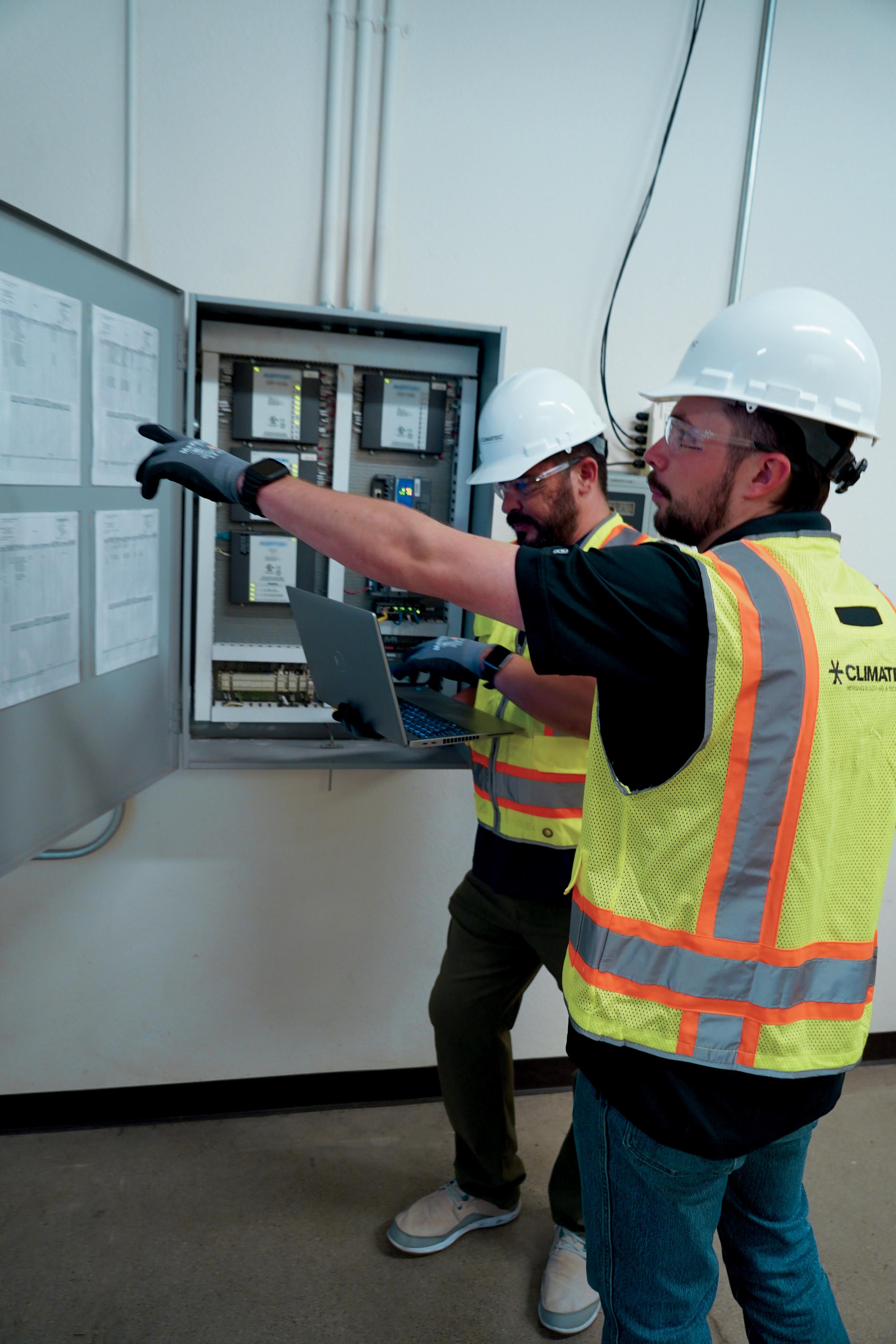
Trusted Partner for
Building
Technology
Building Automation & Control
Security & Life Safety Solutions
Energy Management
Support Services


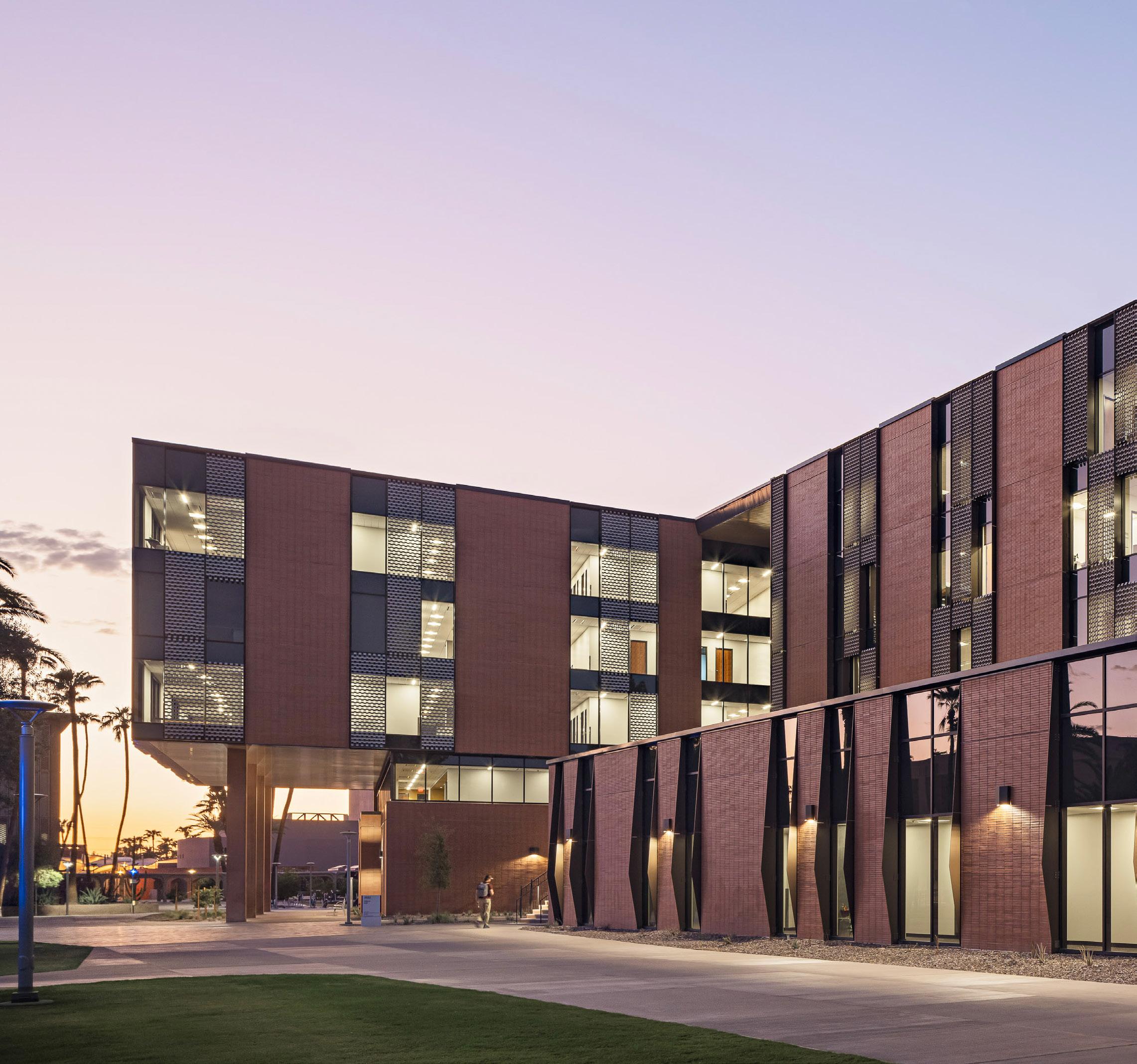
FRAMING POLICY
How the ABA advocates for free enterprise and fair competition
By KYLE BACKER
Like any sector, the construction industry must operate within the legal framework determined by elected representatives across multiple layers of government. These policies can have profound impacts on businesses — intended or otherwise — which is why members of the Arizona Builders Alliance (ABA) speak with lawmakers about their top priorities and concerns.
“Every year in the state of Arizona, upwards of 1,800 bills are introduced. About 300 of those bills end up becoming law,” explains Mike Gardner, president of Policy48, which lobbies on behalf of the ABA.
Expecting elected officials to be experts on every issue they encounter is unreasonable, so Gardner’s job is to explain how a particular bill might
affect the commercial construction industry.
“It’s not their fault that they don’t know — they just haven’t been exposed to it. As a former member of the legislature myself, I can tell you there were times I voted on bills that I didn’t fully understand,” Gardner says. “Nobody can know it all, but luckily, we have good people at the ABA who can
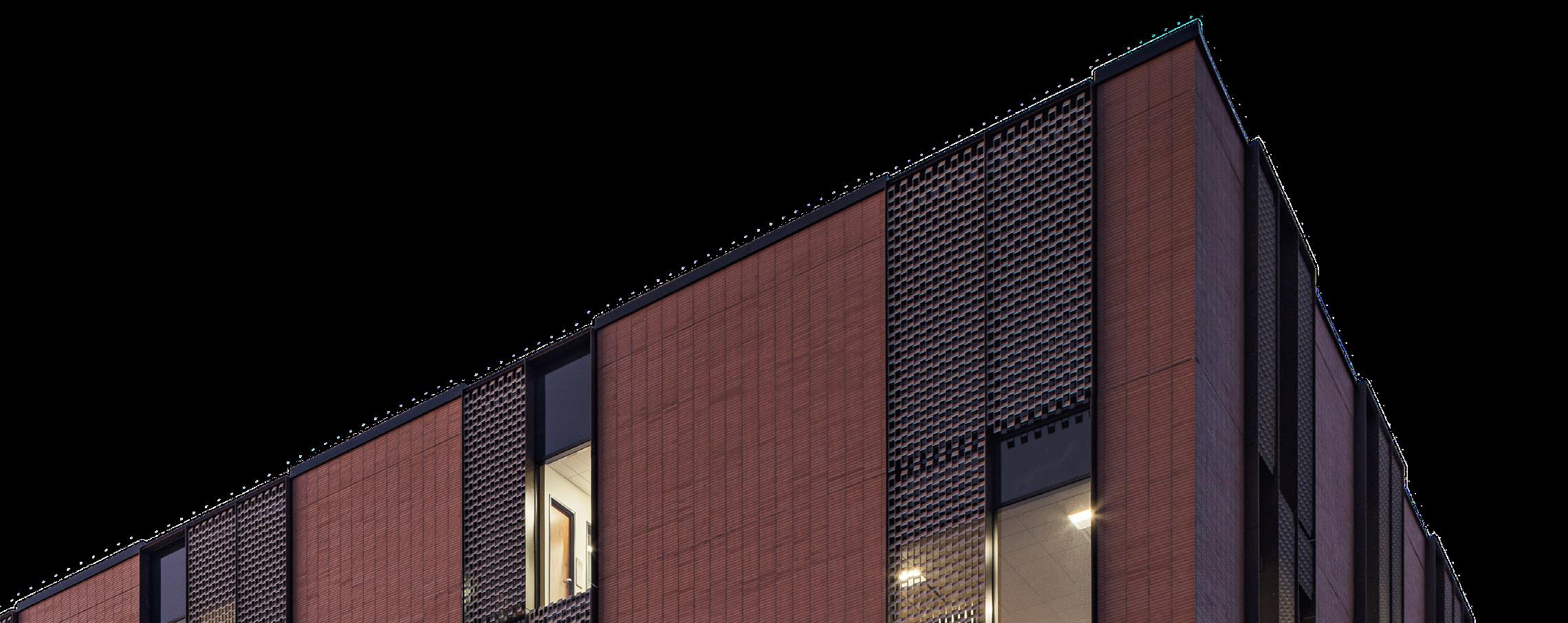
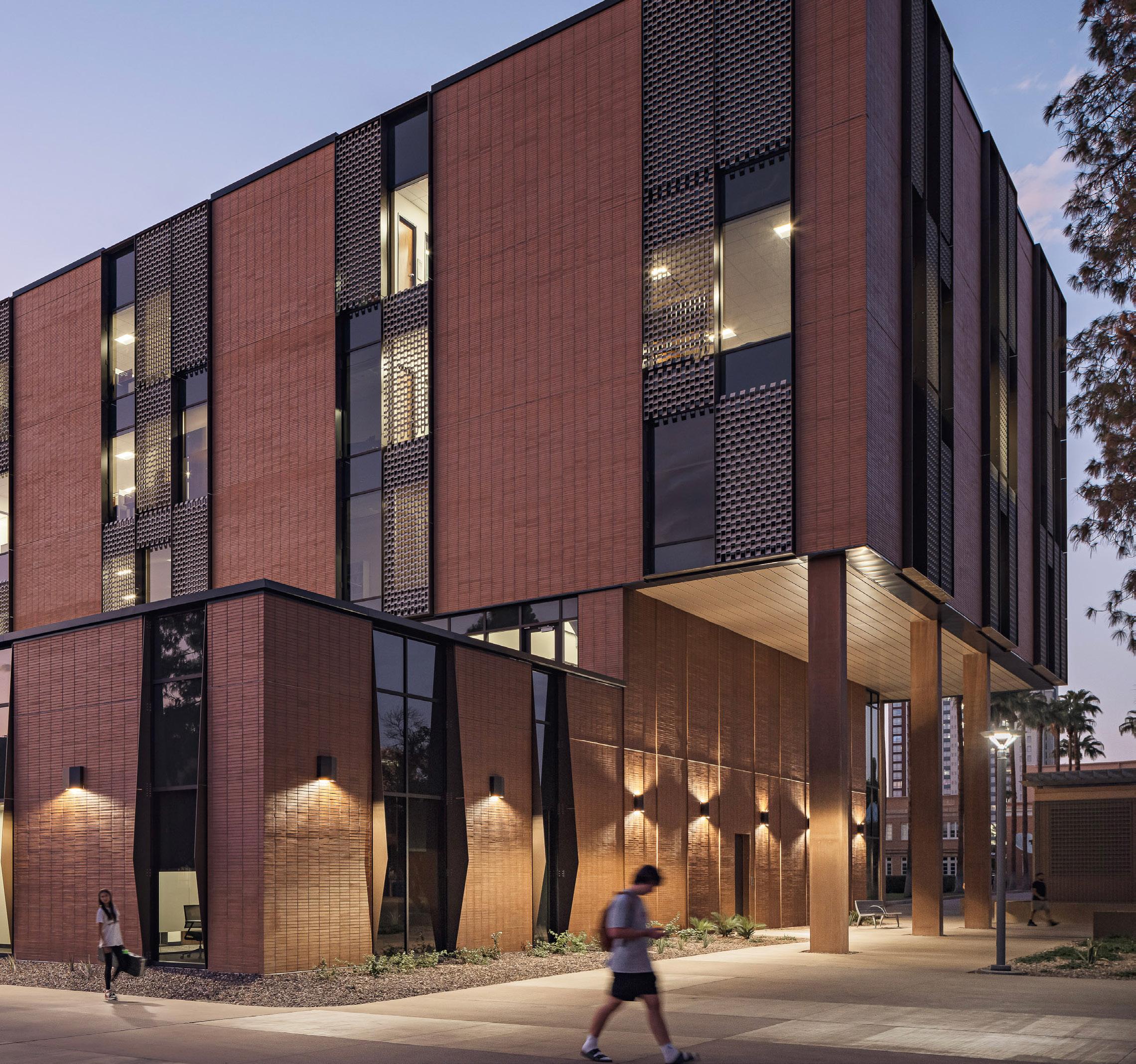
THOUGHTFUL LEARNING:
Arizona State University’s new Wilson Hall is a five-story, 178,000-square-foot academic building that adds 19 much-needed classrooms and additional faculty space to ASU’s main campus. A finalist in the 2025 RED Awards, this project was delivered by a design-build team of Holder Construction and RSP Architects, replacing a building originally constructed in 1956. (Photo courtesy of RSP Architects.)
educate me, then I can help lawmakers make better informed decisions.”
The ABA’s legislative committee consists of approximately 20 members who regularly meet to review legislation and consider whether the association should support, oppose or remain neutral on it. Those recommendations are then sent to the board of directors for acceptance or modification.
Tim Bee, vice president of government and community relations for the ABA, adds that these members are valuable sources of expertise regarding how a policy may affect operations.
As the former Arizona State Senate President — the only person from Southern Arizona to hold the position since 1974 — Bee works with Gardner, utilizing both of their connections and
combined knowledge of the lawmaking process to relay vital insights about the industry to legislators.
“The committee is privileged to host elected officials from all levels of government and have the opportunity to start building relationships with them,” Bee explains. “For example, [in May], we had a roundtable with Congressman Juan Ciscomani and Department of
ARIZONA BUILDERS ALLIANCE
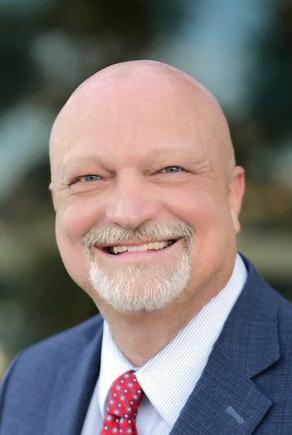
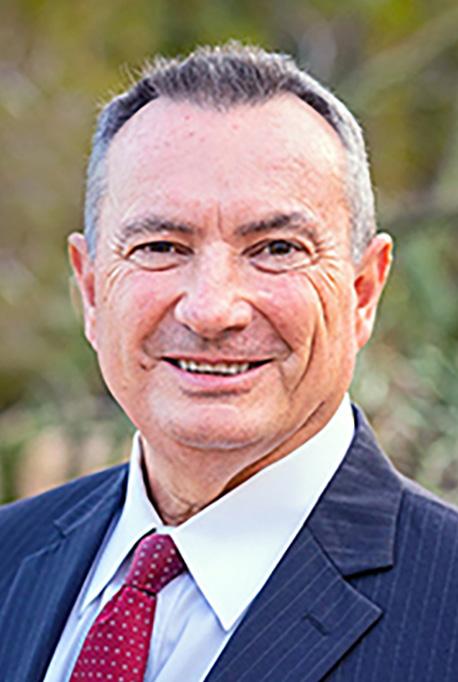
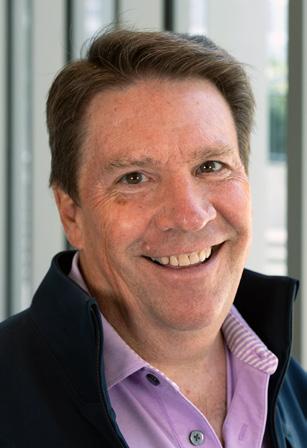
Labor Secretary Lori Chavez-DeRemer.”
Bill Headley, senior vice president at Holder Construction and chairman of ABA’s legislative committee, says Bee and Gardner are instrumental in scheduling valuable facetime with policymakers.
“That helps us learn what the legislator’s positions and priorities are, but it also lets us share our thoughts on the issues — whether it’s weighing in on a current proposal or explaining what challenges the industry is facing we think may need to be addressed,” Headley says.
Reducing ambiguity
Public services and infrastructure are built for the benefit of all, but the mechanisms government entities use to raise revenue to fund these projects can be difficult to parse. Nearly a decade ago, Arizona’s constructionrelated tax laws were overhauled with the goal of simplification, but Gardner says the new code only made it more confusing.
“We deserve easy to understand tax codes that apply evenly among competitors,” he continues. “If two companies see the tax code differently, one might bid on a job with different assumptions on how much taxes will
need to be applied to that contract. Companies will take different approaches on how to complete a project, but everyone should be on the same page regarding the tax bill.”
With the changes made to the system in 2015, contractors must pay transaction privilege tax when purchasing materials for projects involving maintenance, repair, replacement and alteration, each having its own definition within the statute.
“Those words sound synonymous, but the tax code is applied differently based on what work is being done,” Gardner explains. “That means our friends in the [Arizona Department of Revenue] might look at a construction site and say, ‘Actually, you weren’t altering something, you were repairing it, so you paid your taxes inappropriately.’ We have to fix that.”
Seeing as the government employees performing these audits are often accountants and not contractors, explaining why a job should be in one category instead of another isn't a simple task.
“The construction industry didn’t do a good job explaining to lawmakers what impacts these changes to the tax code would have when the matter was
being debated,” Garnder says. “We don’t have a solution yet, but this is a perfect example of why it’s so important to be at the table, otherwise you end up dealing with hurdles — like the very complicated construction tax code we have today.”
Right to work
In 1946, Arizona voters passed a ballot initiative enshrining the right to work in the state’s constitution, meaning union membership cannot be mandated to obtain or retain employment. Efforts have been made in recent years to repeal this amendment, with proponents arguing that since all employees benefit from collective bargaining, they should be required to join or financially support the union representing them.
“That caught our attention,” Gardner says. “We’re not anti-union or prounion. If you want to sign up, feel free, but people shouldn’t be forced to. My wife is a teacher and chooses to be part of the union because she sees value in what the dues get her. My dad was also a teacher, but didn’t join because he disagreed with some of the union’s political stances.”
The ABA itself has union and non-union members that all want
Tim Bee
Mike Gardner
Bill Headley
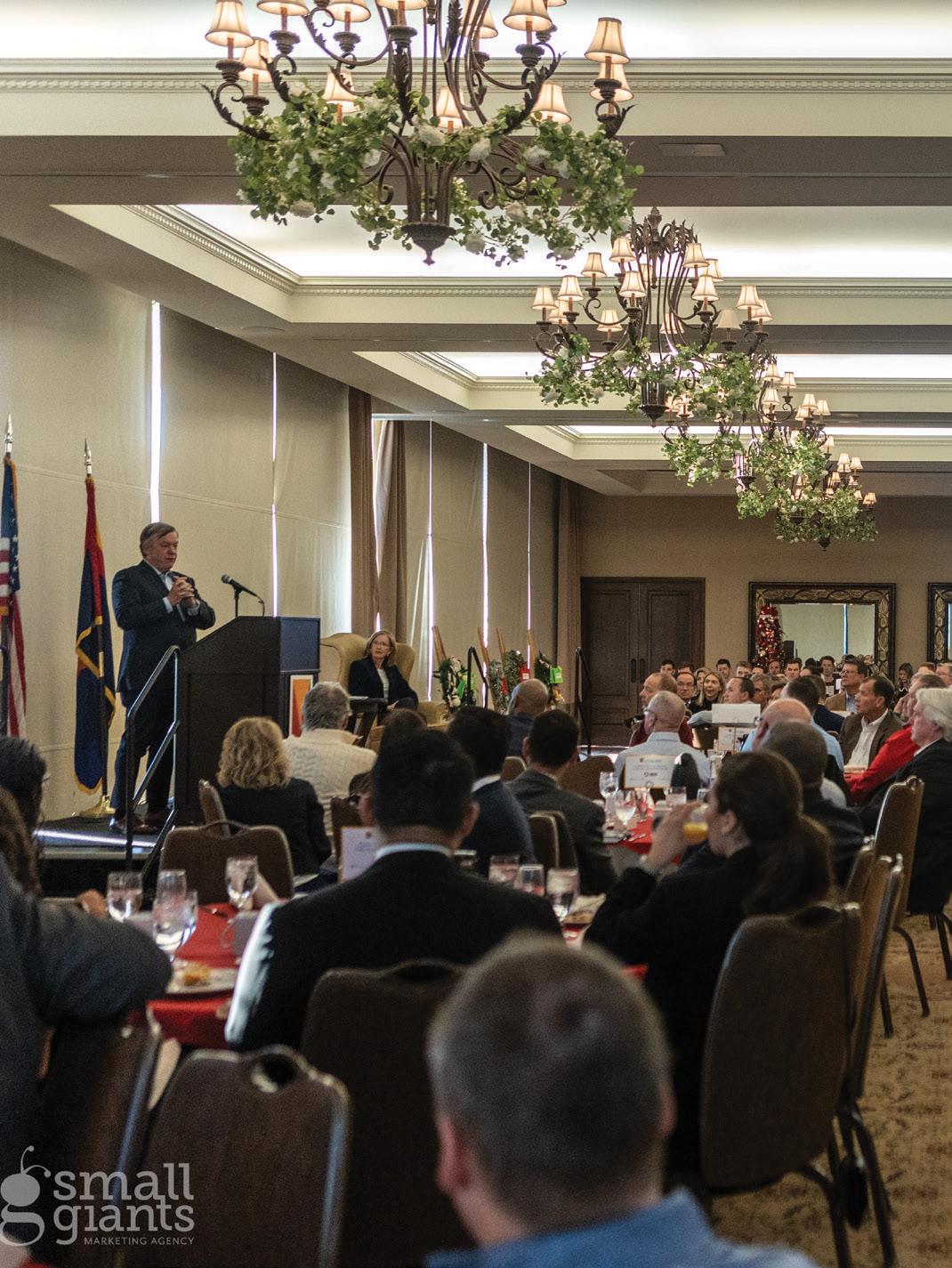

ADVANCING YOUR INTERESTS IN REAL ESTATE DEVELOPMENT
Valley Partnership advocates for public policies that advance the interests of the commercial, industrial and master planned real estate development industries.
Our goal? To build a legacy for the future of development. We hope you’ll join us.


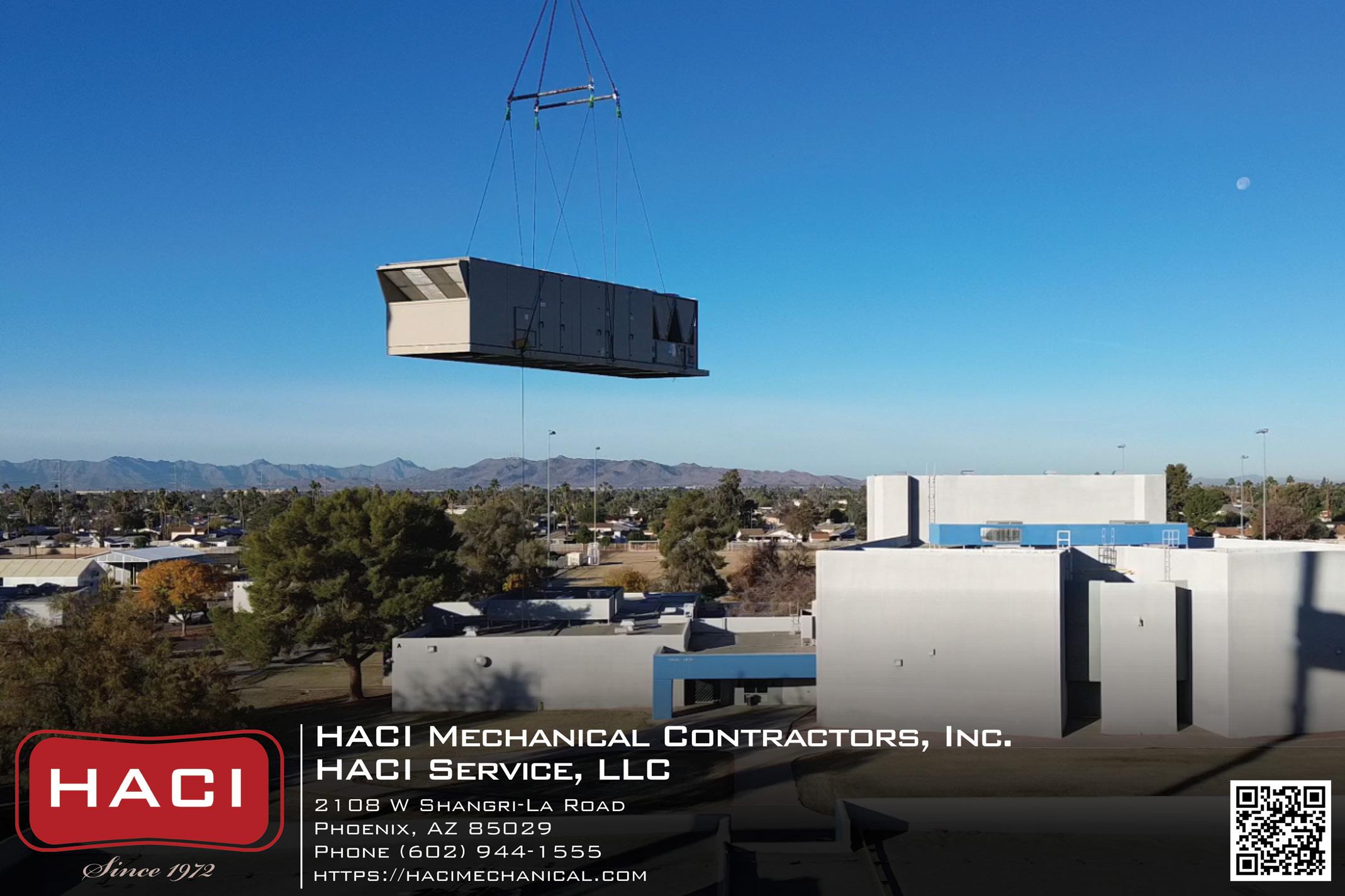
ARIZONA BUILDERS ALLIANCE
Every year in the state of Arizona, upwards of 1,800 bills are introduced. About 300 of those bills end up becoming law.
the best outcomes possible for Arizona’s commercial construction industry. Headley notes that Holder Construction has projects with both types of contractors on the same site without any issues, and the goal is to keep it that way.
Rather than taking a stance against unions, Gardner says the association advocates for a level playing field without favoritism towards one style of shop or another.
“Most lawmakers appreciate that we want contractors to be chosen based on factors like their skills, price and guarantee of work instead of union status,” he continues.
Fair competition
Under Arizona statute, counties, cities and local governments are barred from requiring contractors working on public construction projects to pay a prevailing wage, which is determined through compensation surveys conducted in the region.
Despite this prohibition, Arizona Attorney General Kris Mayes issued an opinion in June 2023 arguing that prevailing wages are a form of minimum wage that municipalities have the authority to regulate. In the wake of that opinion, the cities
— Mike Gardner, president of Policy48.
” “
of Phoenix, Tucson and Tempe all adopted prevailing wage mandates.
“We strongly disagree with the opinion [of the attorney general], so the ABA, along with a few other associations, challenged those ordinances in court based on the fact that they are barred under state law,” Bee explains. “The Goldwater Institute represented us and we were successful, though the case is going through the appeals process. But we are pretty confident that we will win the lawsuit.”
The issue is not with the wage itself, considering most ABA members already pay their workers more than what would be prescribed by the mandates, according to Bee. But the administrative load created by the ordinances, such as weekly paycheck reports to the government, is burdensome, especially for small and medium-sized firms.
“That limits competition,” Bee says. “For large contractors that already work on federal jobs requiring that type of reporting, taking on a prevailing wage contract probably won’t be a problem. But companies that don’t have the necessary staff or infrastructure in place likely won’t even try. When we surveyed our members, 75% indicated that they wouldn’t bid on projects with prevailing wage requirements.”
Holder Construction works on federal projects, and Headley agrees that satisfying the reporting criteria is the most challenging aspect. Both general contractors and trade partners need additional administrative staff to prove to the government that the stipulations are being met, even though Holder Construction pays their employees above the prevailing wage.
“When someone says to a legislator, ‘We want a prevailing wage to make sure the workers on site are getting reasonable pay,’ it makes a lot of sense,” Headley continues. “But if you look at what that entails, there’s a whole lot more to it that it seems.”
Gardner adds that even though prevailing wage ordinances don’t say anything regarding union status, outcomes tend to lean in that direction.
“People that follow prevailing wage statutes are more likely to be union members,” he continues. “It starts to feel like code for ‘you need to be part of the union to get this job.’ Larger companies with union stewards end up winning those contracts instead of smaller, merit-based shops. Again, we have no problems with unions, but you shouldn’t get bonus points because you happen to be in one. Let the market figure itself out.”
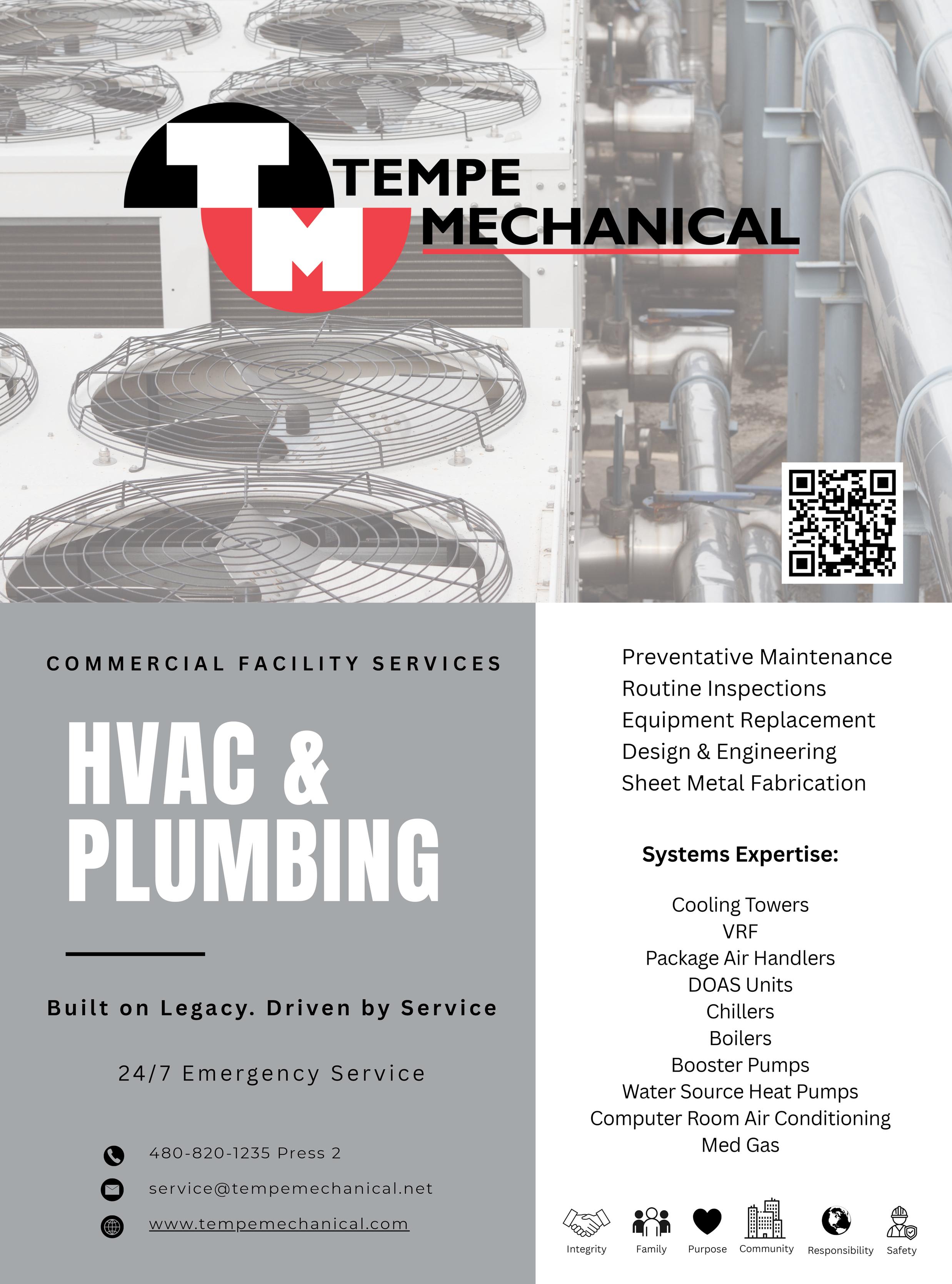
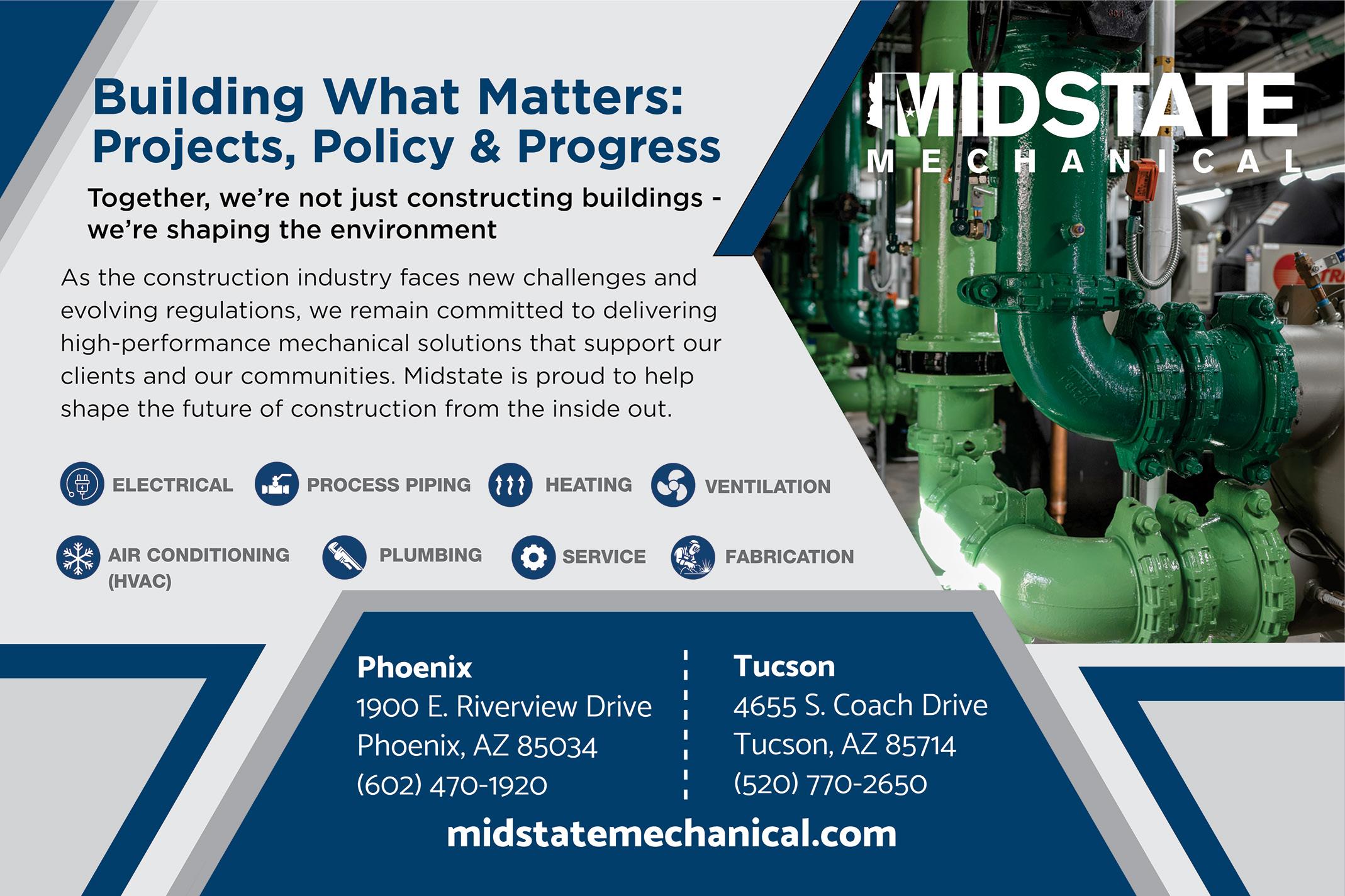
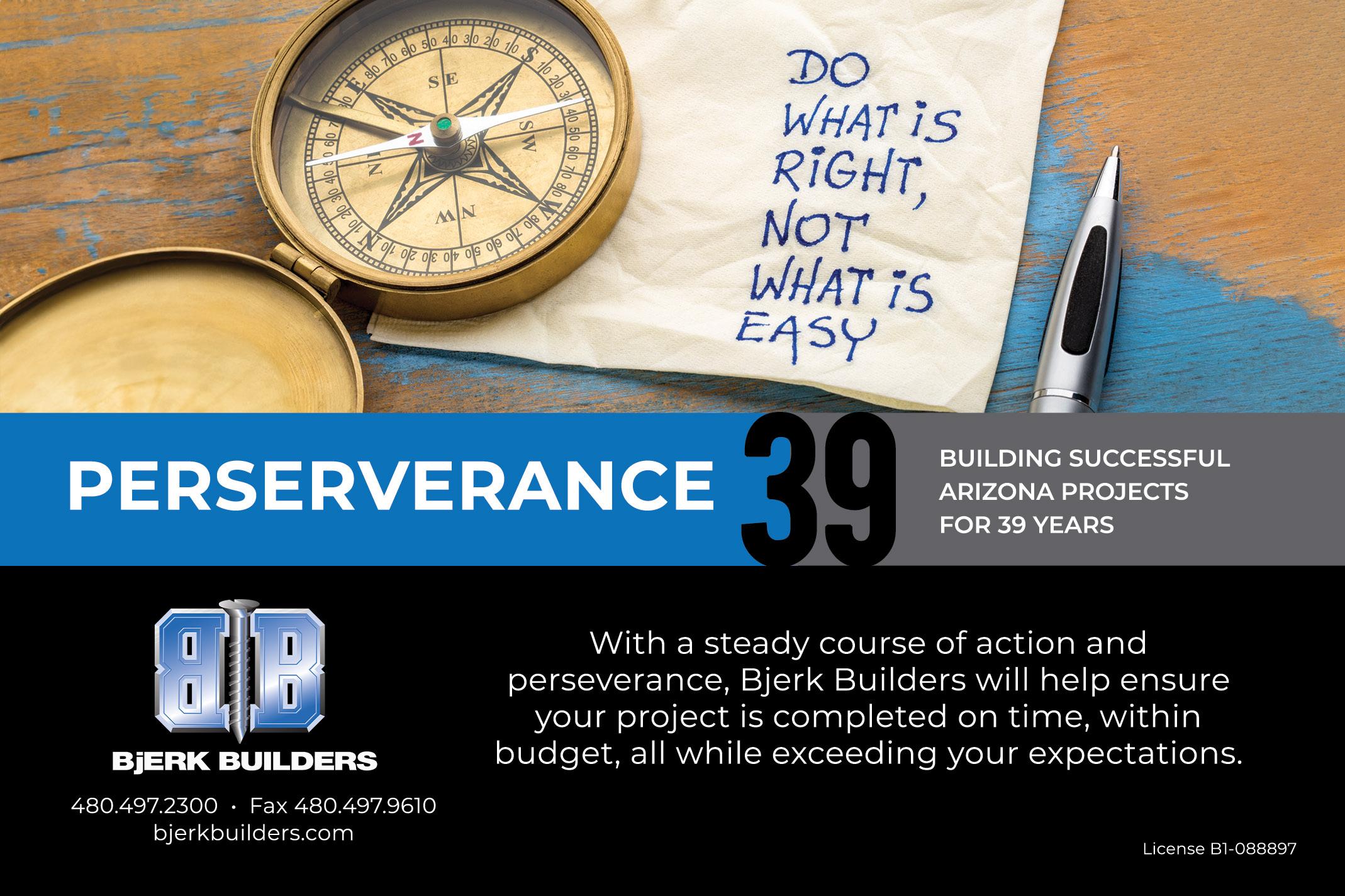

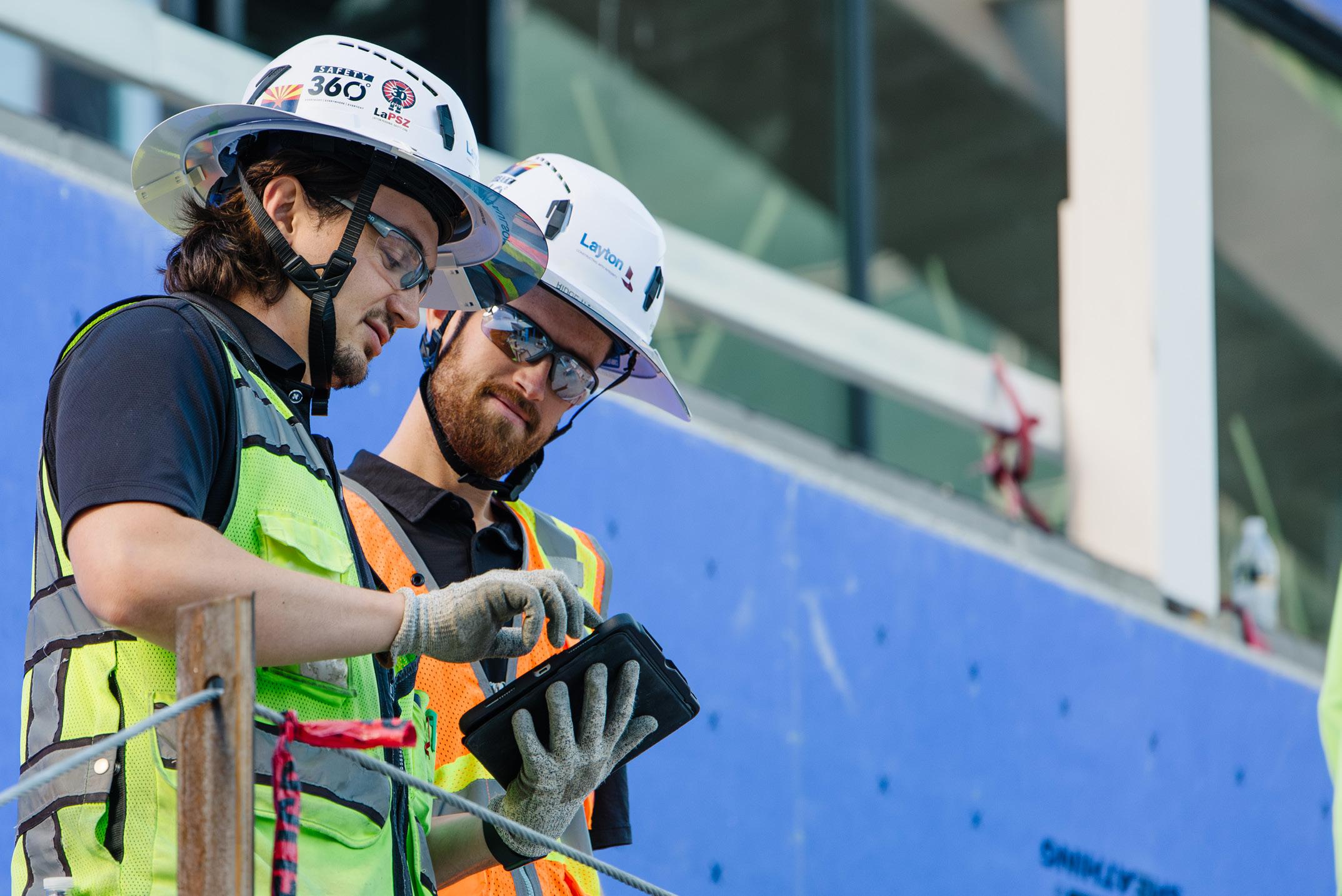




ARIZONA BUILDERS ALLIANCE
ABA MEMBER PROJECTS
Members of the Arizona Builders Alliance (ABA) spent the last year breaking ground, constructing and delivering some of the state’s best developments. Here are just a few noteworthy projects that ABA members have worked on in 2025.
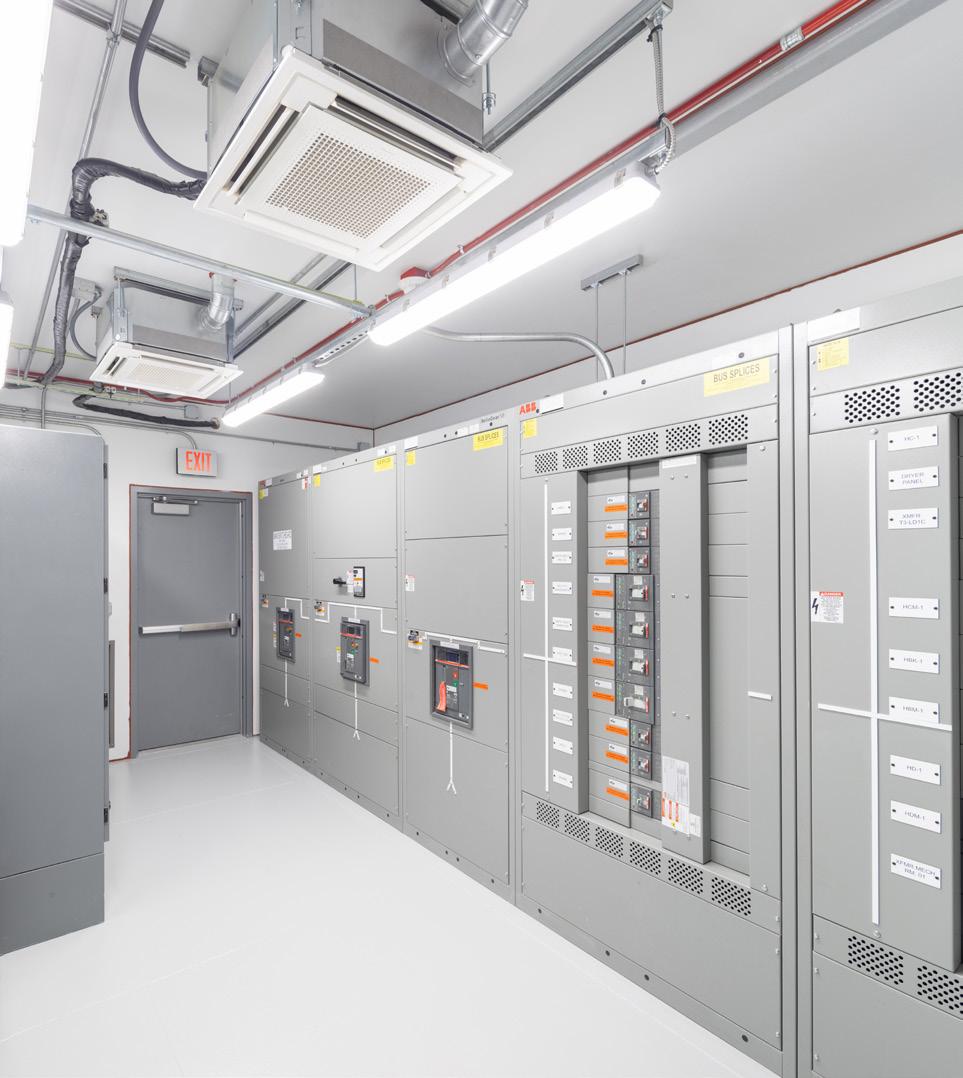
PROJECT NAME:
Arizona State University Desert Financial Arena Electrical Upgrade
DEVELOPER AND/OR GENERAL CONTRACTOR: DPR Construction
ARCHITECT: Wood Patel and Associates, Inc., Vanderweil Engineers
SUBCONTRACTORS: Evergreen Innovation Group, Sturgeon Electric
LOCATION: 600 E. Veterans Way, Tempe
START DATE: April 2024
COMPLETION DATE: April 2025
DETAILS: DPR worked with Evergreen Innovation Group and Sturgeon Electric to plan the replacement of the original electrical service entrance, housed in a challenging location within ASU Desert Financial Arena. The solution included a prefabricated electrical room and series of strategic electrical cut-overs to re-feed the entire arena without disruption to ongoing operations.
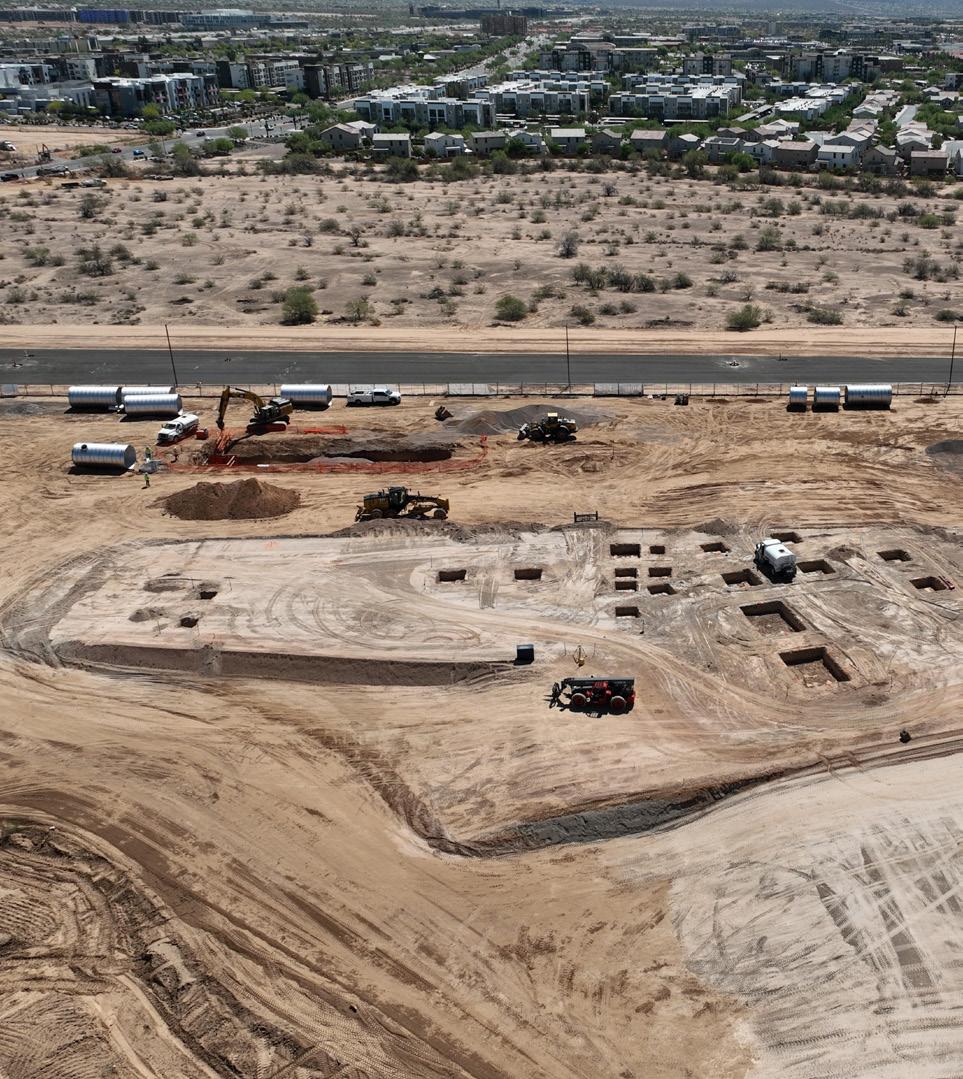
PROJECT
NAME:
Brooks Phoenix Inpatient Rehabilitation Hospital
DEVELOPER AND/OR GENERAL CONTRACTOR: Kitchell
ARCHITECT: Hoefer Welker
SUBCONTRACTORS: Bergelectric, Comfort Systems USA, HACI Mechanical, Red Cedar Steel, Pete King Construction
LOCATION: 18500 N. 64th St., Phoenix
START DATE: January 2025
COMPLETION DATE: September 2026
DETAILS: This new 60,000-square-foot, three-story inpatient rehabilitation hospital on the Mayo Clinic campus includes 60 beds, rehab gyms, clinical spaces and an innovation hub featuring advanced rehabilitation technologies — built in partnership with Brooks Healthcare and Mayo Clinic.
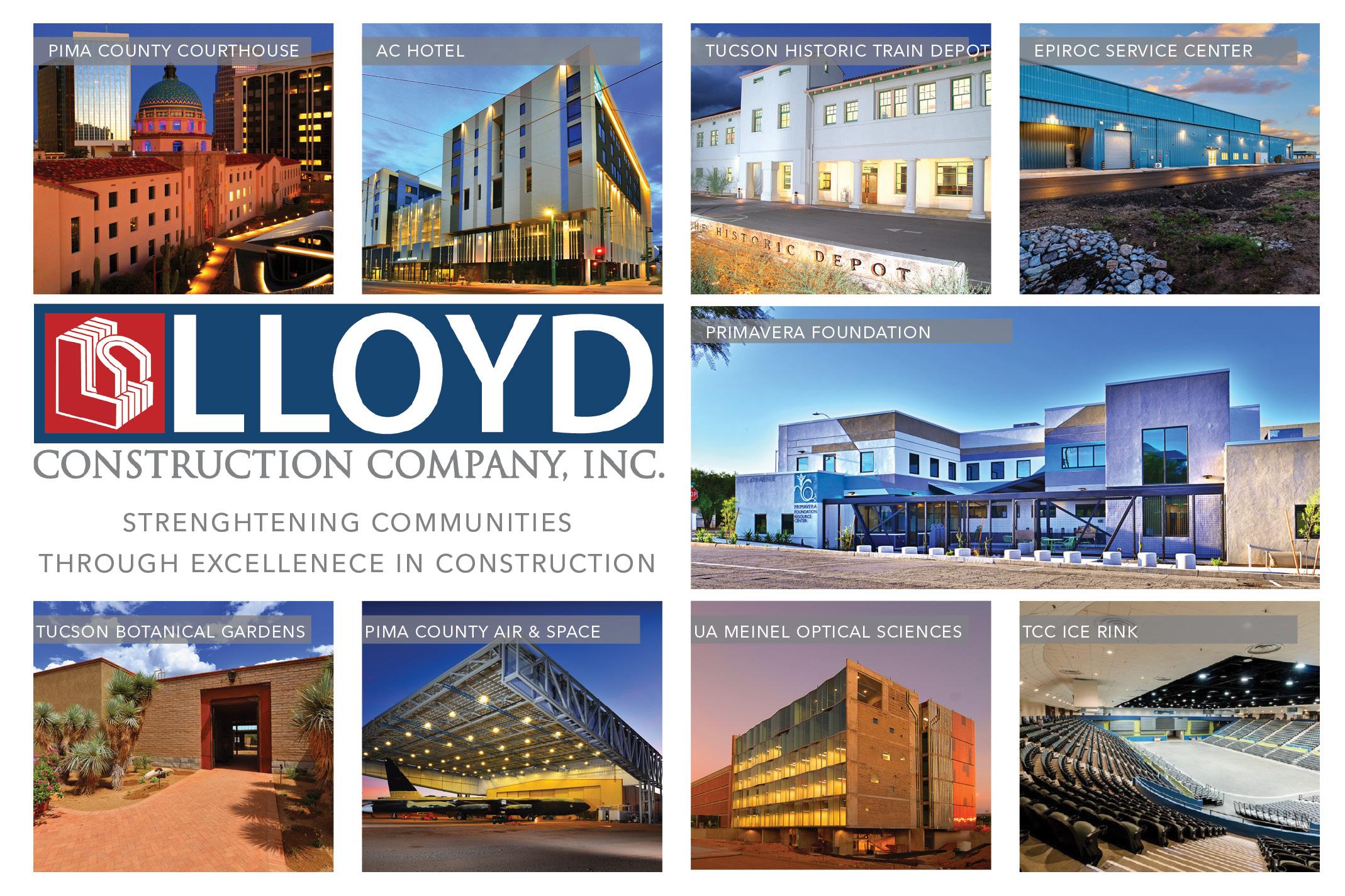

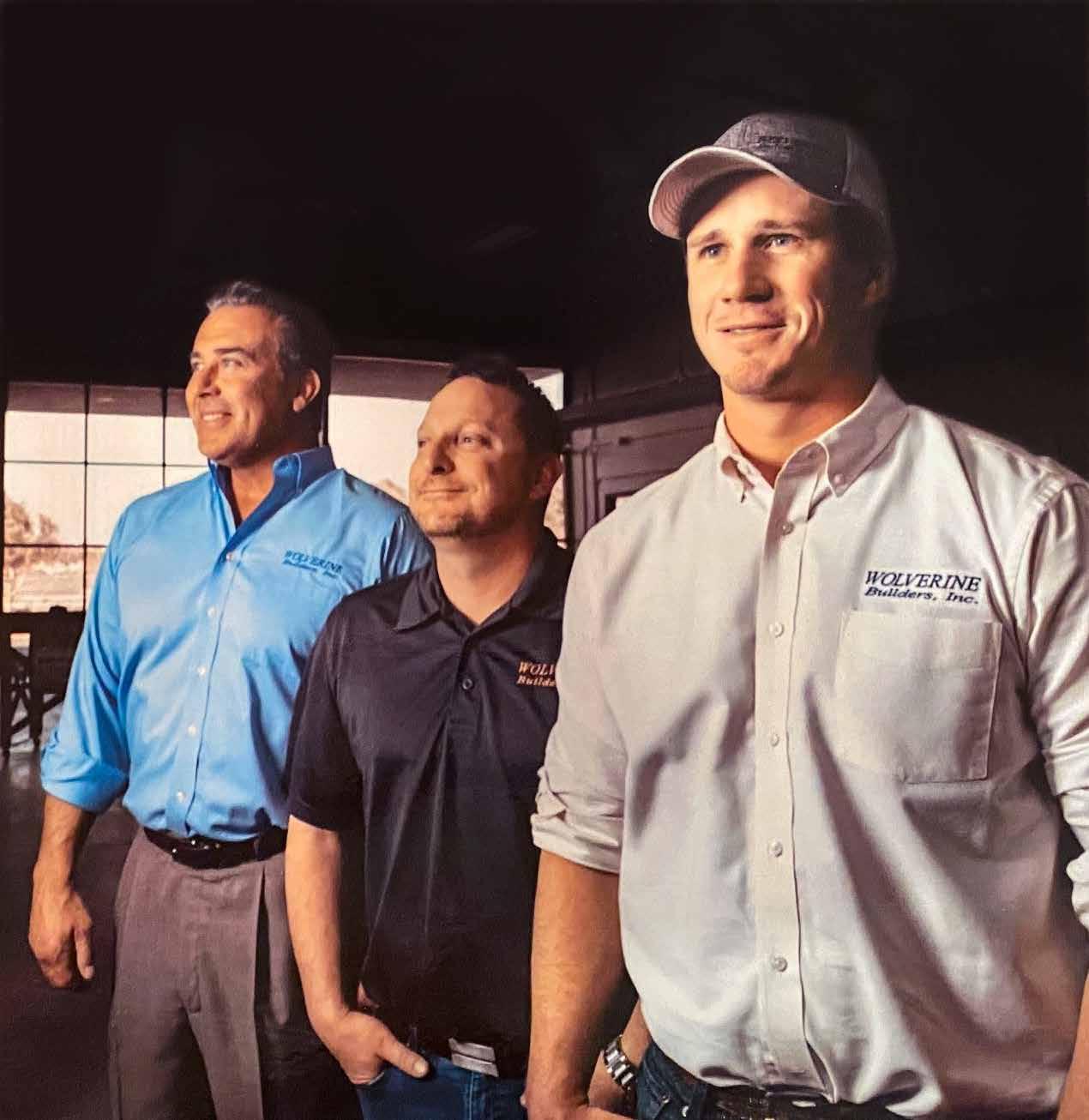
ARIZONA BUILDERS ALLIANCE
PROJECT NAME:
Desert Diamond Casino White Tanks
DEVELOPER AND/OR GENERAL CONTRACTOR: Hunt-Penta Joint Venture ARCHITECT: JCJ Architects
SUBCONTRACTORS: Ricor, AROK, AMFAB Steel, Delta Diversified Electrical, Bel-Aire Mechanical
LOCATION: 8200 N. Sarival Ave., Waddell START DATE: April 2023
COMPLETION DATE: April 2025
DETAILS: This greenfield project consists of a 200,000-square-foot casino situated on a 110-acre site with an adjacent free-standing central utility plant and a 2,034 space, five-story precast concrete parking garage. The casino features a 55,000-square-foot gaming floor, three dining venues, sportsbook, VIP lounge, as well as a full array of back-of-house offices, employee dining and other support services areas.
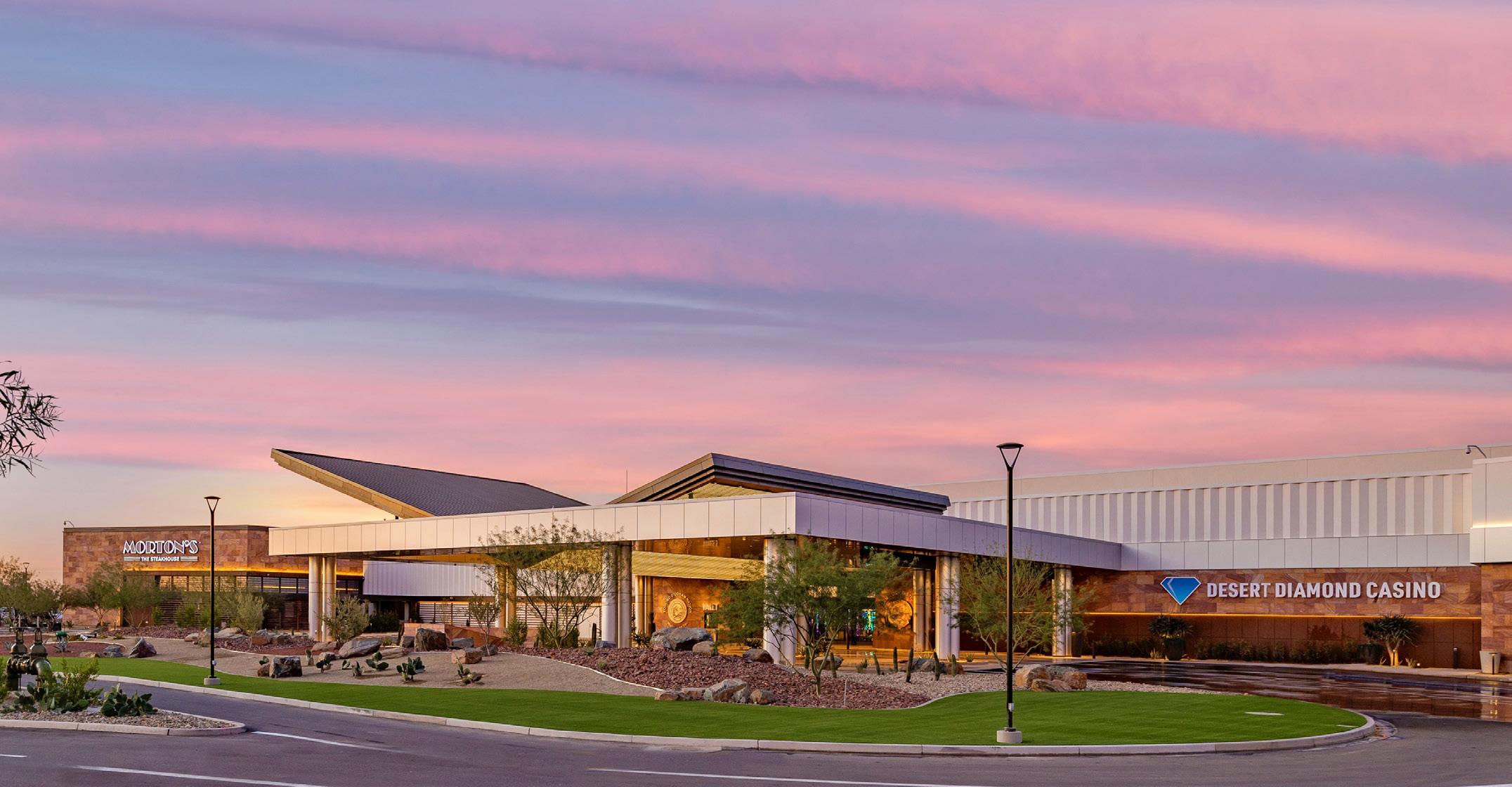
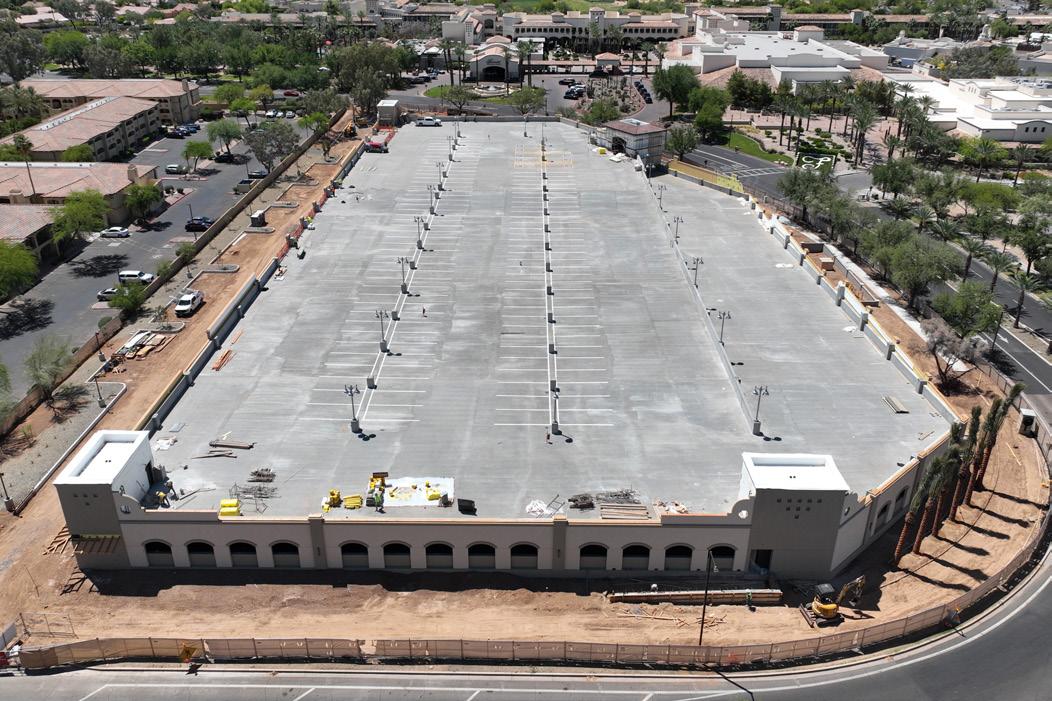
PROJECT NAME:
Fairmont Scottsdale Princess Parking Garage
DEVELOPER AND/OR GENERAL CONTRACTOR: Kitchell
ARCHITECT: Kollin Altomare Architects
SUBCONTRACTORS: S&S Paving, Stone Cold Masonry, Concrete Masters, Sanders & Wohrman, NKW, Inc.
LOCATION: 7575 E. Princess Dr., Scottsdale
START DATE: March 2024
COMPLETION DATE: June 2025
DETAILS: Located at the Fairmont Scottsdale Princess Resort, this 320,700-square-foot, three-story cast-in-place parking garage includes 989 stalls, valet spaces, on-grade parking, landscaping and full site work, plus 10 EV and 10 golf cart charging stations.
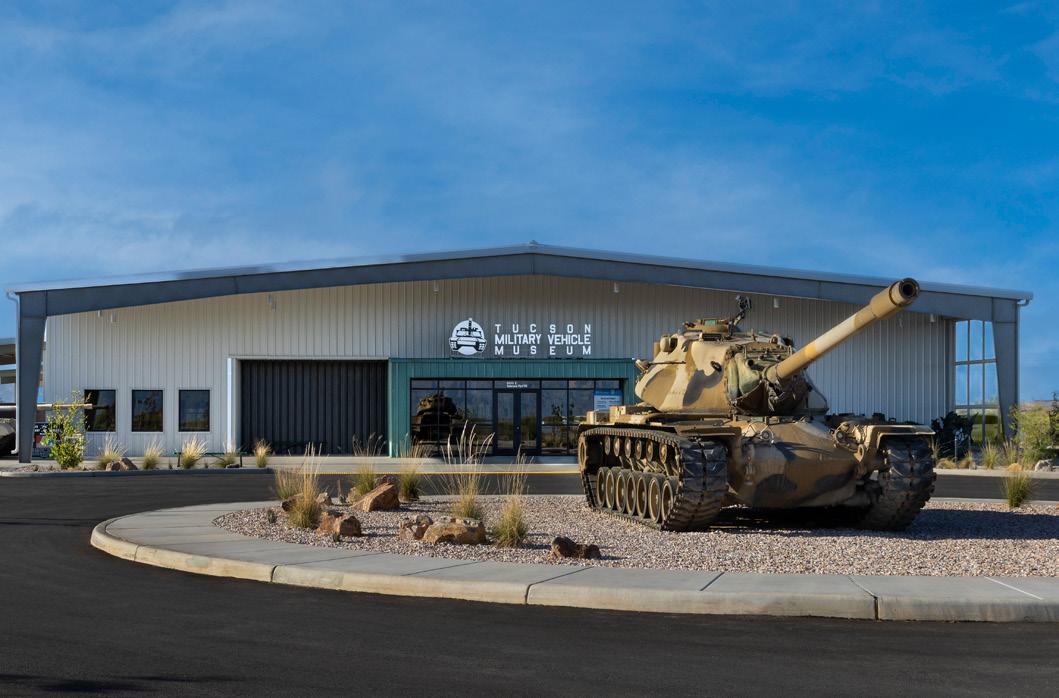
PROJECT NAME: Military Vehicle Museum
DEVELOPER AND/OR GENERAL CONTRACTOR: Barker Contracting
ARCHITECT: Seaver Franks Architects
SUBCONTRACTORS: Steadfast Structures, Landmark Metal Builders, Sun Valley Drywall, Achilles, Blueair
LOCATION: 6000 E. Valencia Rd., Tucson
START DATE: October 2024
COMPLETION DATE: February 2025
DETAILS: This project consisted of a pre-engineered metal buildings with a viewing deck and tank track for demonstrations.
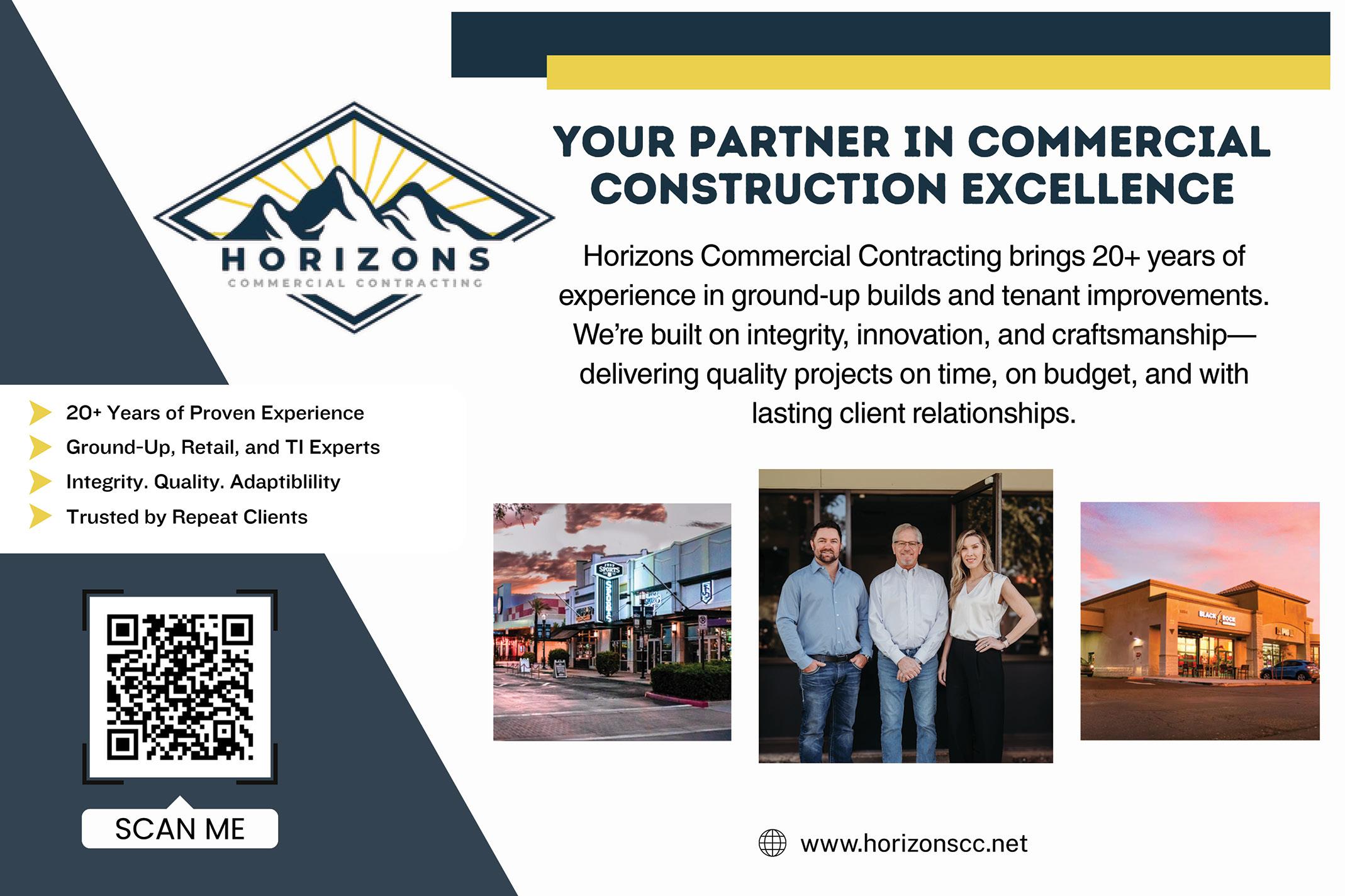
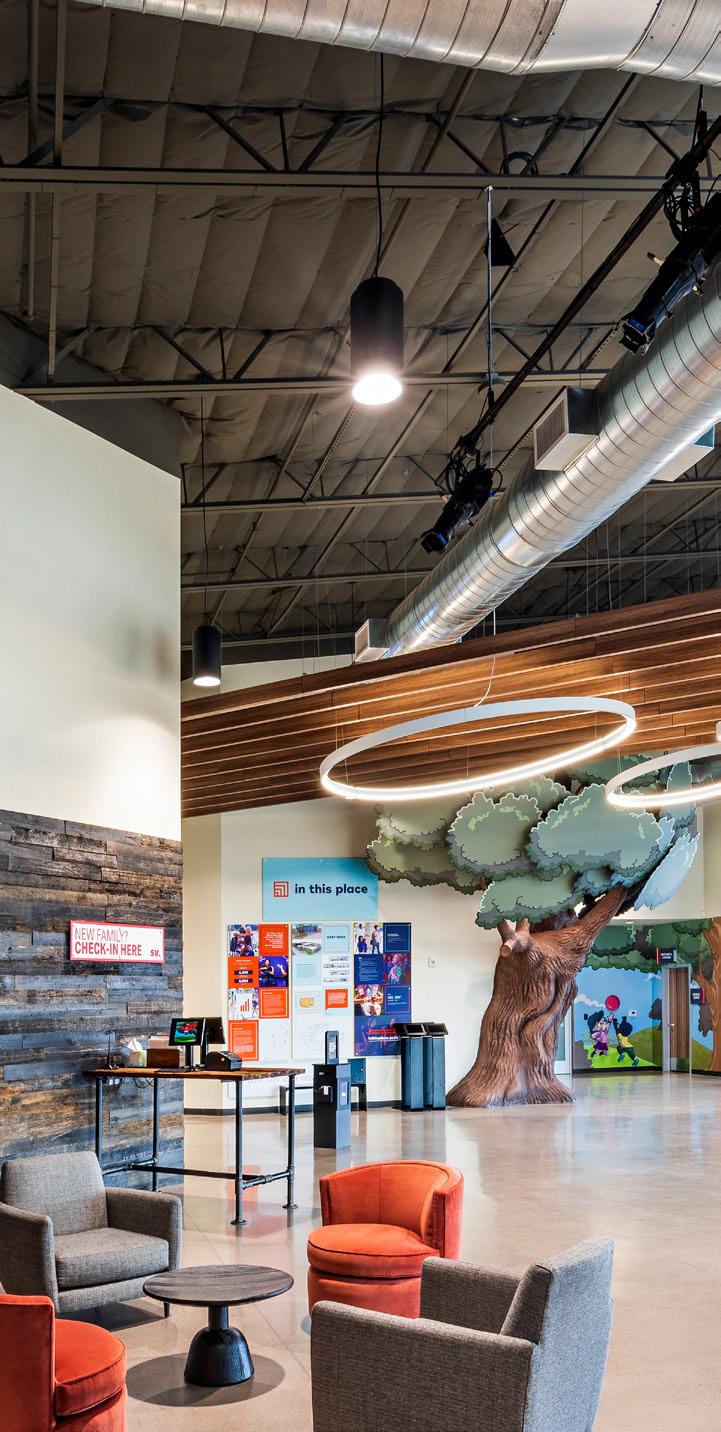
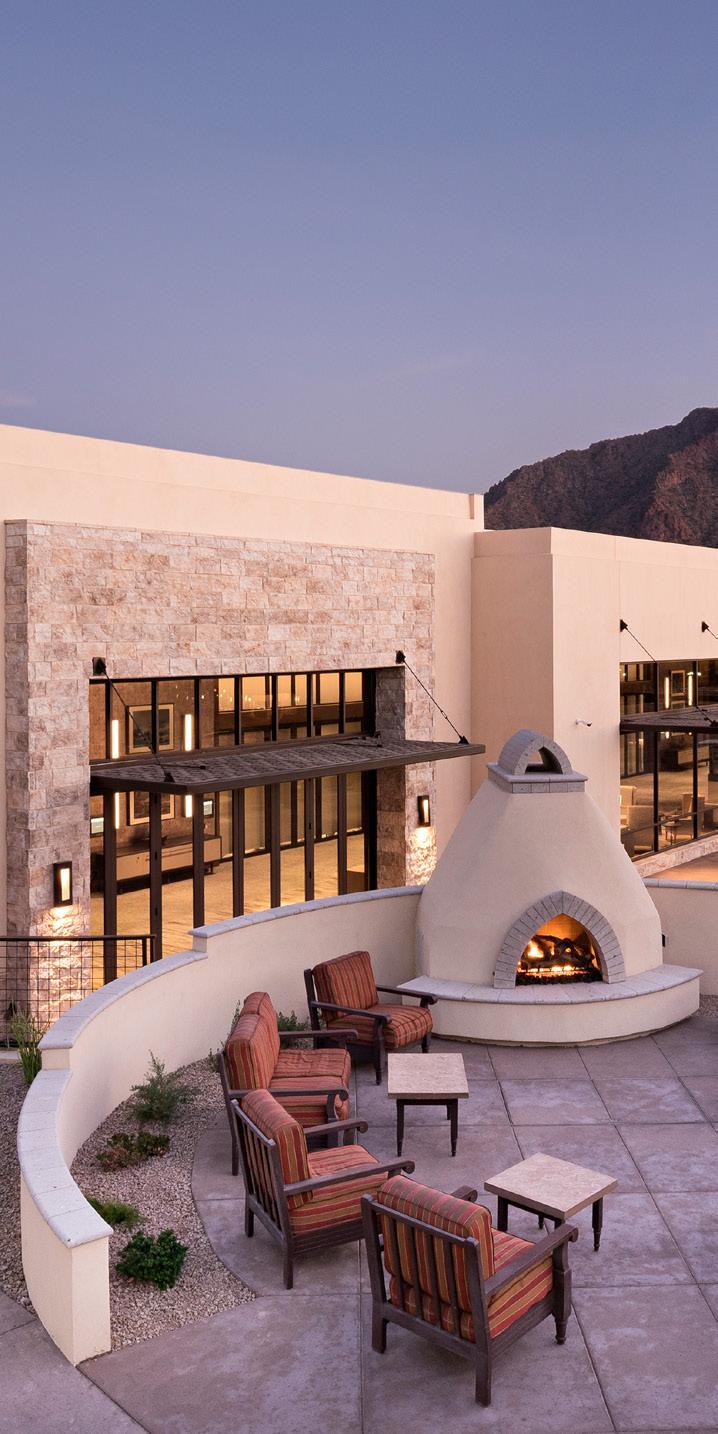

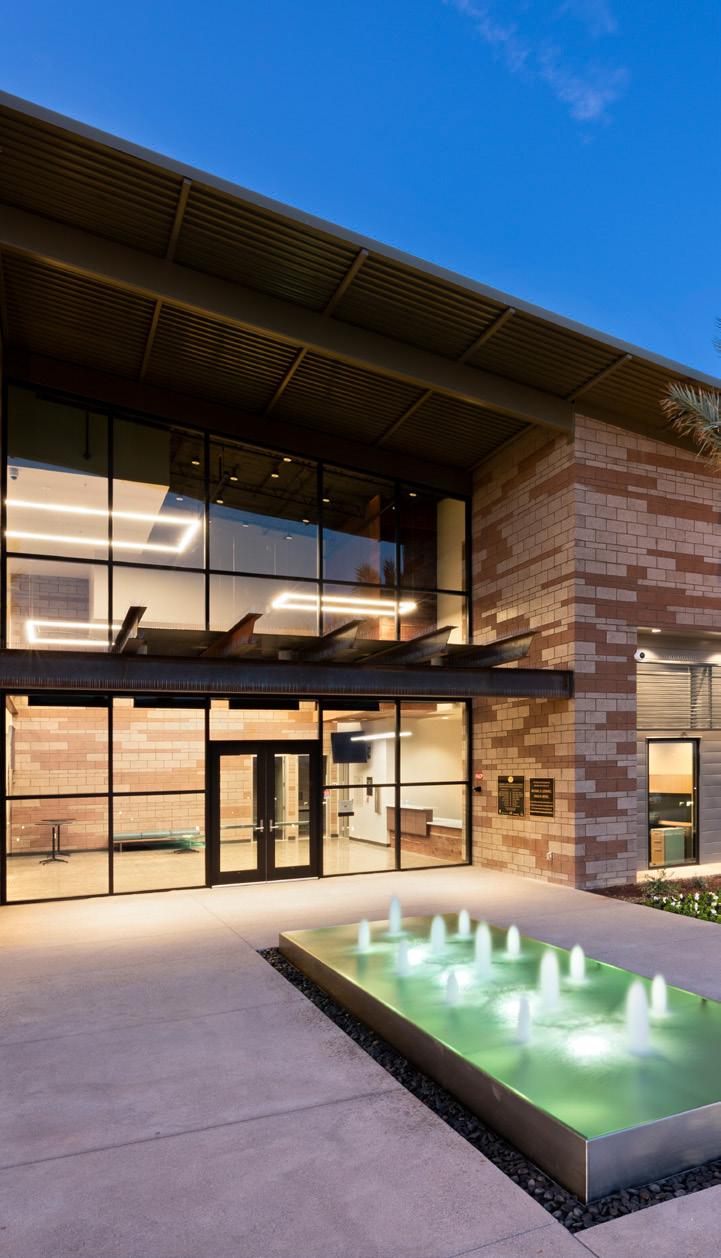
ARIZONA BUILDERS ALLIANCE
PROJECT NAME: Pascua Yaqui IX
DEVELOPER AND/OR GENERAL CONTRACTOR: Pascua Yaqui Tribe, Kappcon
ARCHITECT: Travois
SUBCONTRACTORS: Dominguez Earthmovers, Accura Systems of Tucson, Azurite Builders, Facelift Painting, Sun Mechanical
LOCATION: 8000 S. Camino Cocoim, Tucson START DATE: April 2024
COMPLETION DATE: February 2025
DETAILS: A multifamily development for the Pascua Yaqui Tribe, the project offers 50-units in a 76,095-square-foot apartment building with associated parking.
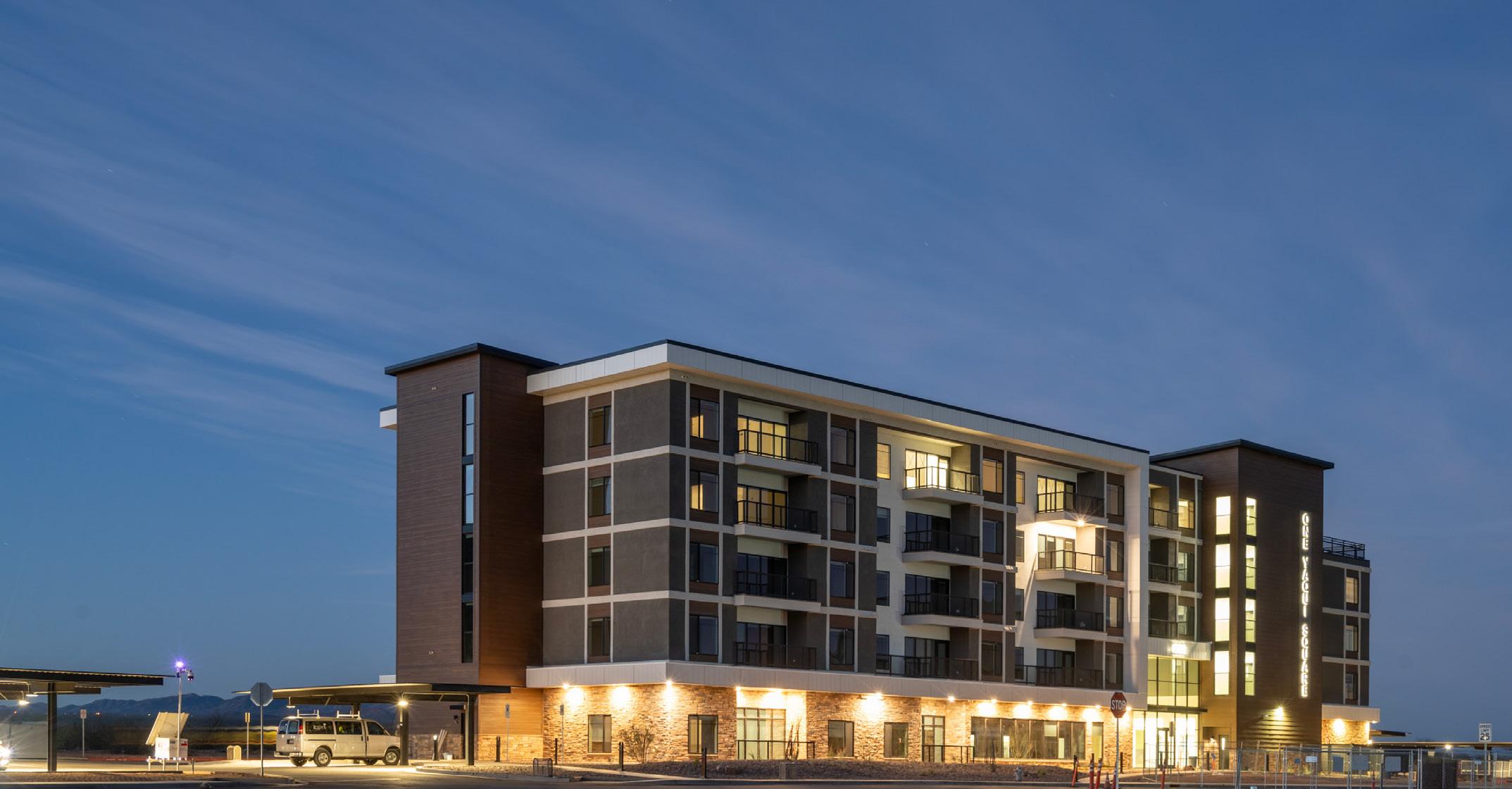
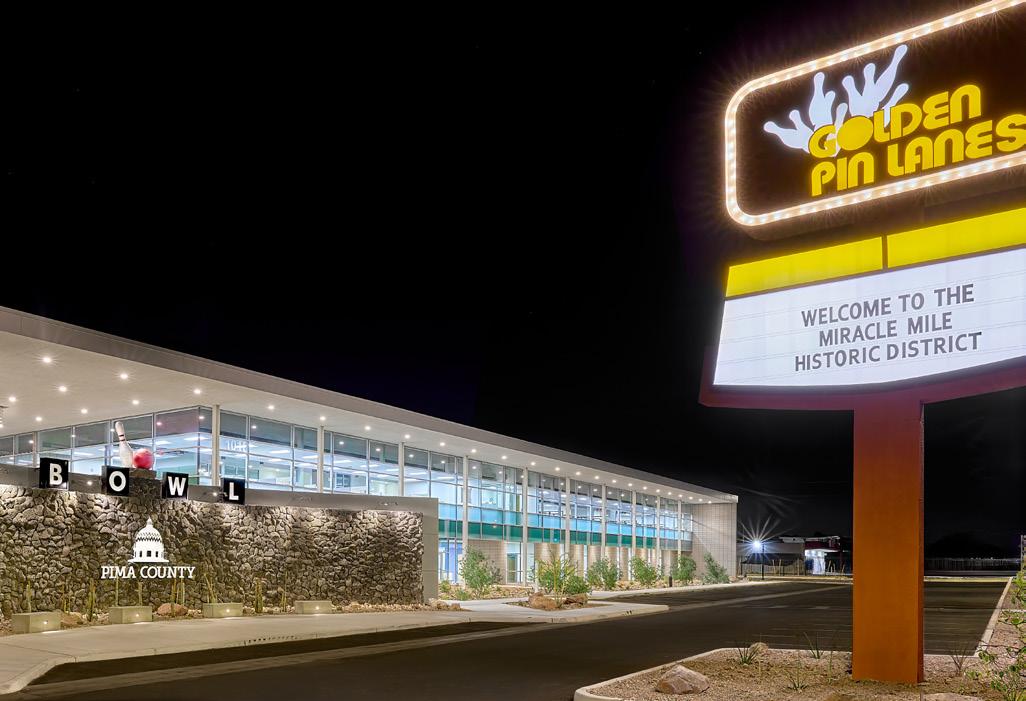
PROJECT NAME: Pima County Northwest Service Center
DEVELOPER AND/OR GENERAL CONTRACTOR: Lloyd Construction Company
ARCHITECT: Line and Space
SUBCONTRACTORS: Achilles, Blanco Concrete, Stark Electric, Days Excavating, Hallmark Landscape and Design
LOCATION: 1010 W. Miracle Mile, Tucson
START DATE: December 2019
COMPLETION DATE: March 2025
DETAILS: Pima County Northwest Service Center is a 39,000-square-foot, two-story facility housing multiple Pima County departments. It also offers a variety of public services including workforce development, community assistance, food safety and vital records services.
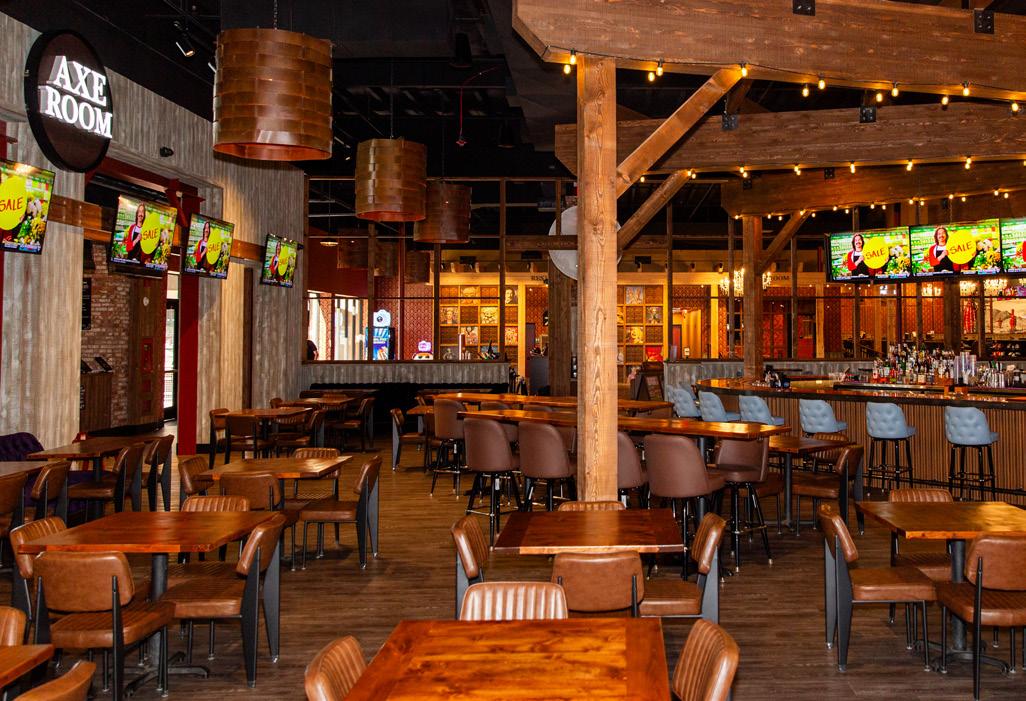
PROJECT NAME: Roadies
DEVELOPER AND/OR GENERAL CONTRACTOR: Barker Contracting
ARCHITECT: A23 Studios
SUBCONTRACTORS: Achilles, Tucson Commercial Carpet, Coles Custom Painting, E&K Construction
LOCATION: 4811 E. Grant Rd., Tucson
START DATE: June 2024
COMPLETION DATE: March 2025
DETAILS: Roadhouse Cinemas expanded their existing footprint by 36,000 square feet with a project consisting of six axe throwing lanes, crazy darts, 12 bowling lanes, a 7,200-square-foot laser tag arena, five micro theaters, over 130 arcade games, full bar, private event room and access to the existing Roadhouse Cinemas.
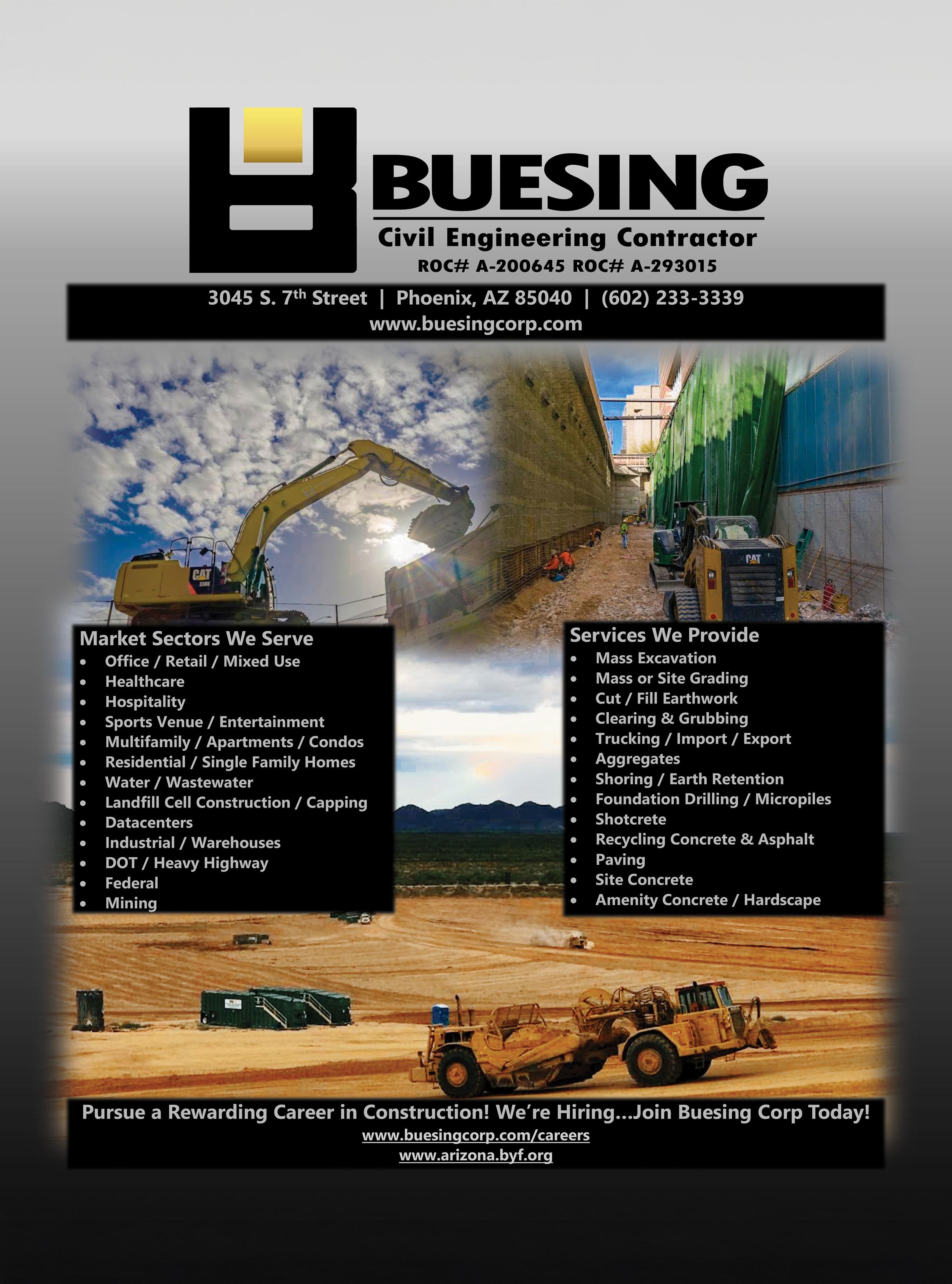
ARIZONA BUILDERS ALLIANCE
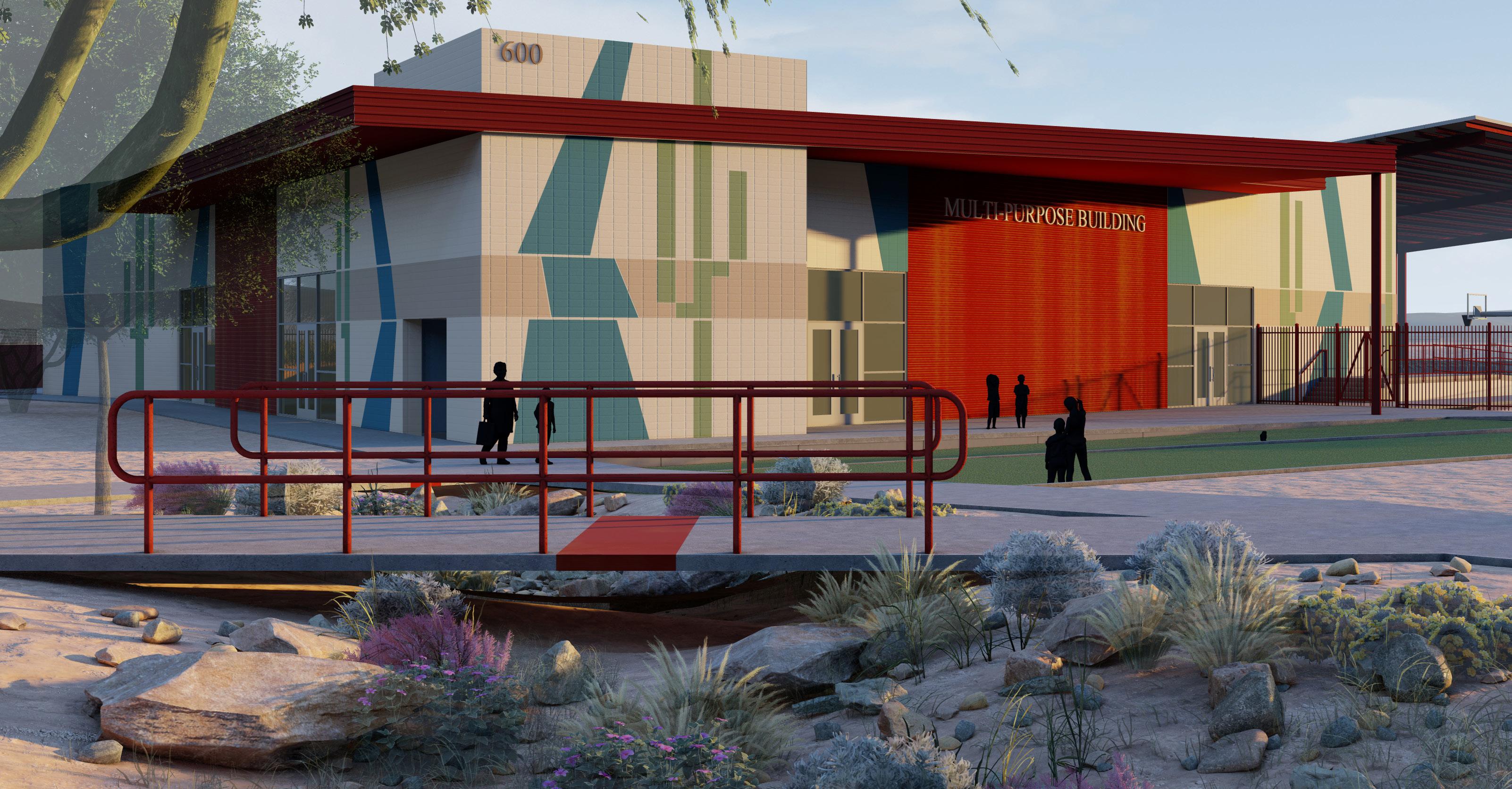
PROJECT NAME:
Saguaro Creek K-8 School
DEVELOPER AND/OR GENERAL CONTRACTOR: Concord General Contracting ARCHITECT: Swaim Associates
LOCATION: 8150 S. Rocking K Ranch Loop, Tucson START DATE: April 2024
COMPLETION DATE: July 2025
DETAILS: A new K–8 school for Vail School District, this 25-acre campus includes classrooms, a multipurpose auditorium, SPED spaces, and outdoor learning/play areas. Designed for energy efficiency and walkability, features include solar canopies, natural drainage and a rooftop-fed creek for monsoon season. Phase 2 included additional classrooms and sports facilities.
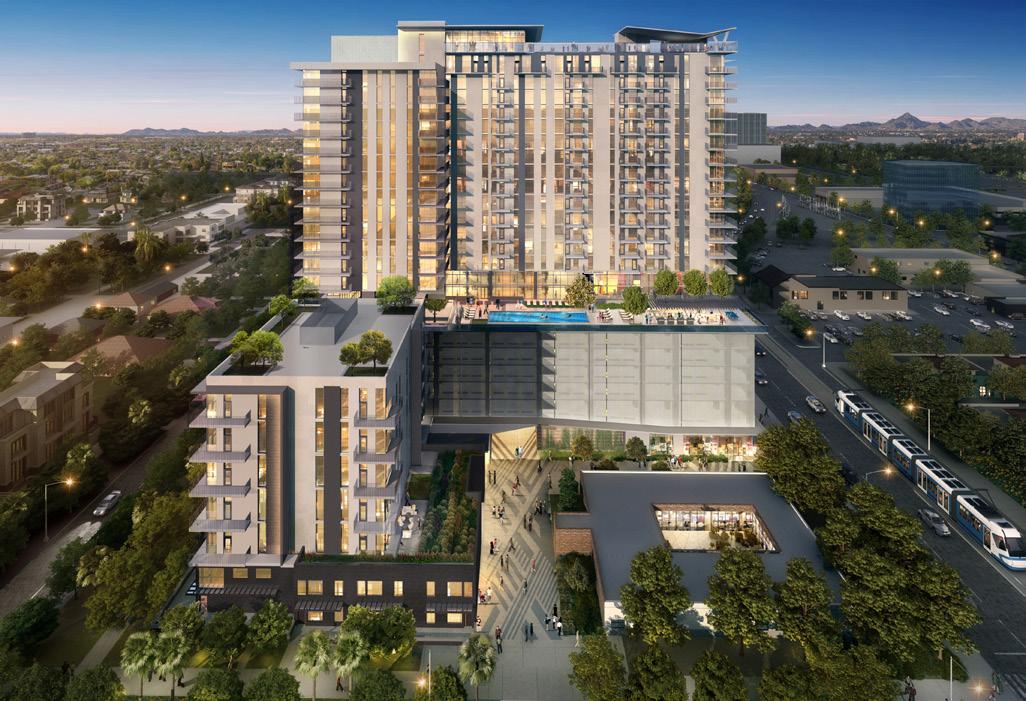
PROJECT NAME: Saiya
DEVELOPER AND/OR GENERAL CONTRACTOR: Hatteras Sky, JE Dunn Construction Company
ARCHITECT: Shepley Bulfinch
SUBCONTRACTORS: Suntec Concrete, SECON Electric, HACI Mechanical, JFN Plumbing
LOCATION: 802 N. 1st Ave., Phoenix
START DATE: July 2022
COMPLETION DATE: August 2025
DETAILS: Saiya is a new 23-story mixed-use, high-rise project in Downtown Phoenix’s Roosevelt Row Arts District that features 389 residential units, 12,550-square-feet of street-level retail and amenity spaces. Amenities include two swimming pools, outdoor courtyards, fitness center, game room, rooftop kitchen and lounge, dog park and concierge services.
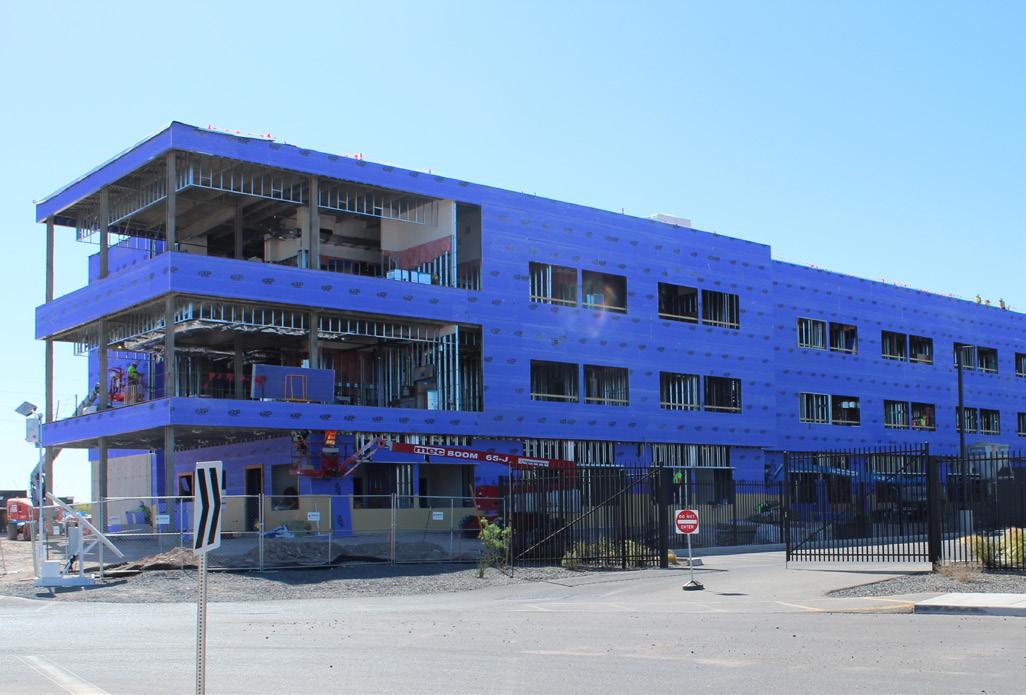
PROJECT NAME: Tucson Rehabilitation Hospital
DEVELOPER AND/OR GENERAL CONTRACTOR: MYCON General Contractors
ARCHITECT: Perkins&Will
SUBCONTRACTORS: B&B Concrete
LOCATION: 870 E. Tucson Marketplace Blvd., Tucson
START DATE: April 2024
COMPLETION DATE: December 2025
DETAILS: The new three-story, 55,098-square-foot hospital will feature 48 modern patient rooms, two rehab therapy gyms with advanced technologies and state-of-the-art equipment.
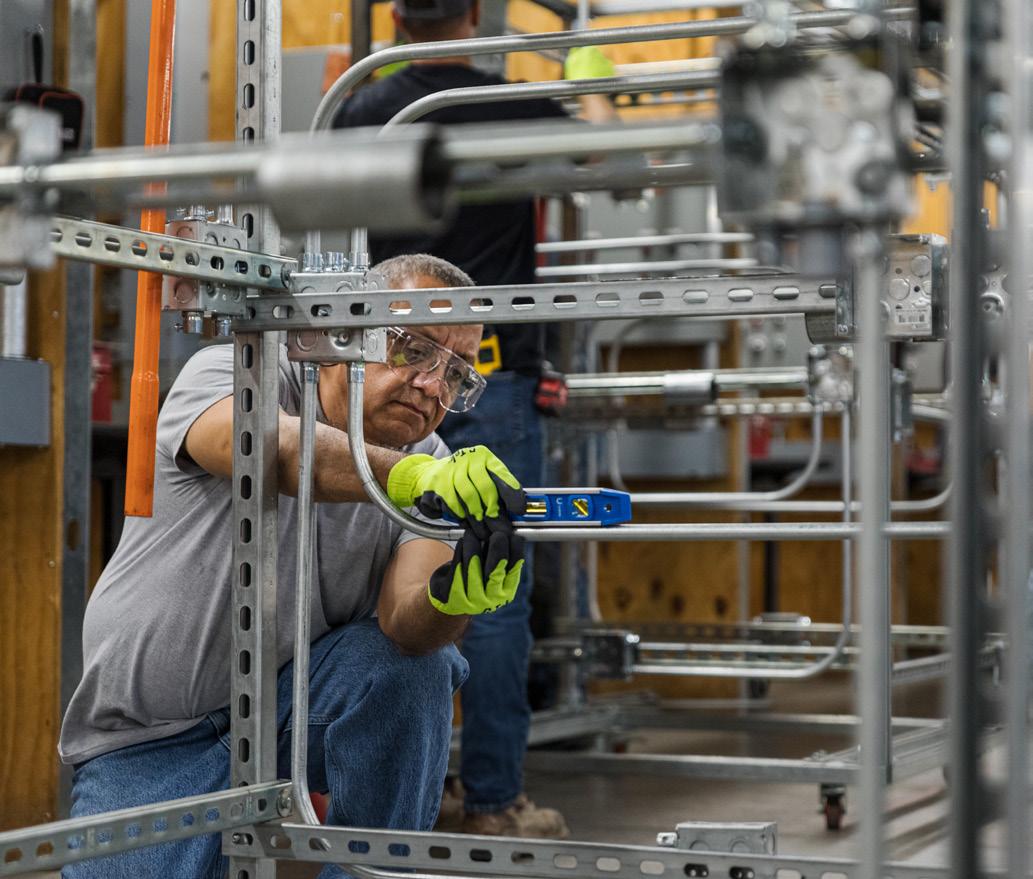
We believe education is so important that we privately fund our own school and apprenticeship, Phoenix Electrical Training Alliance.
